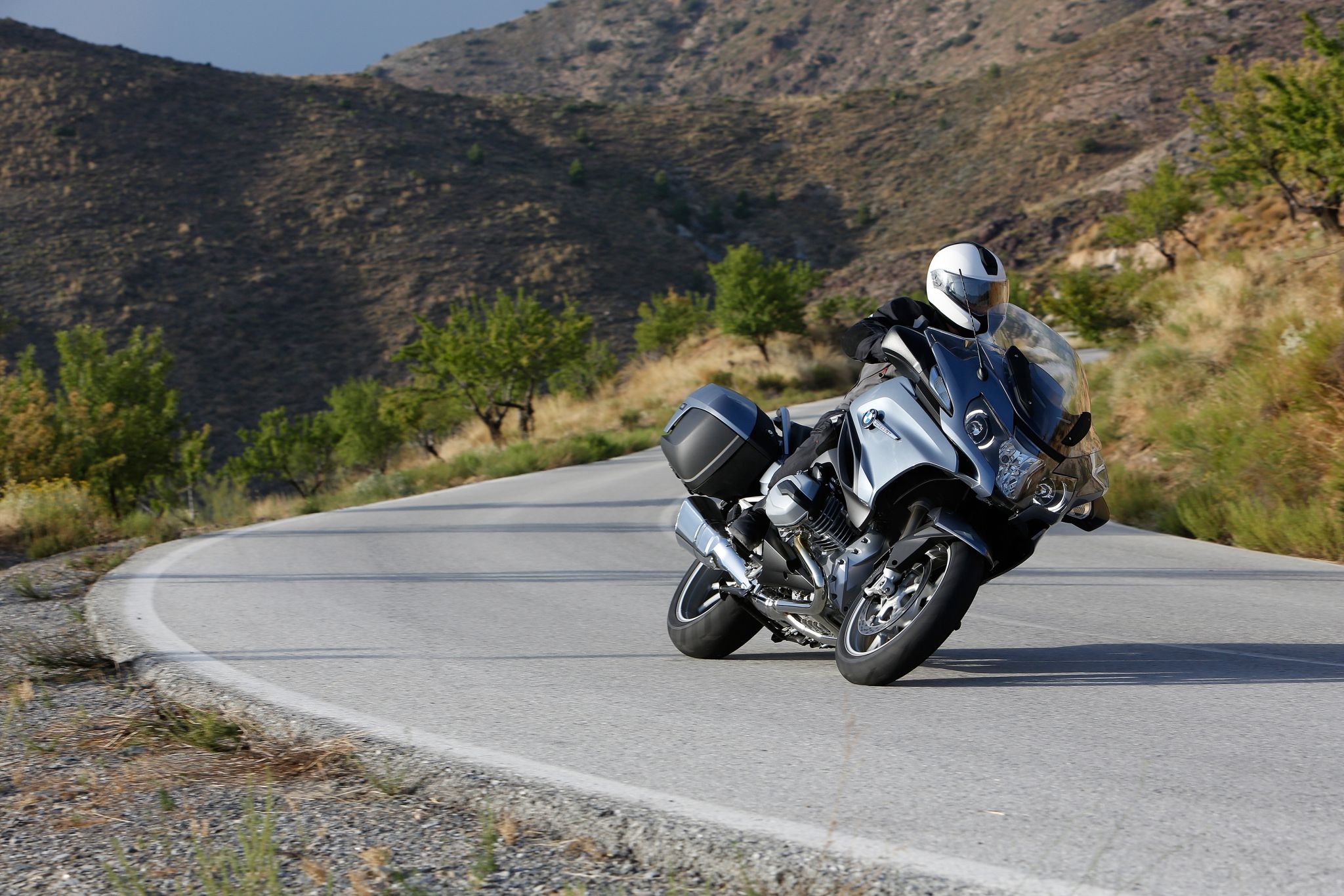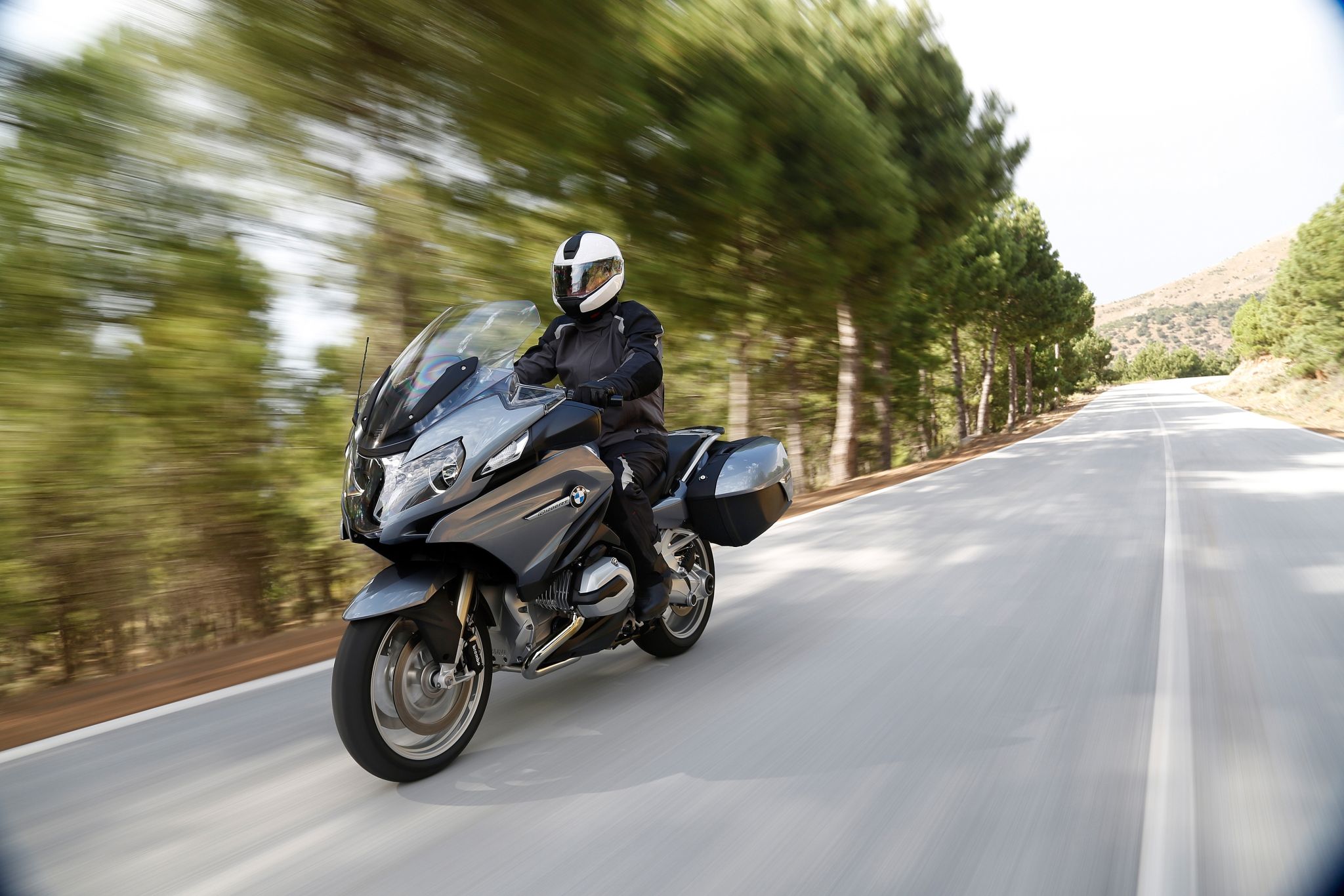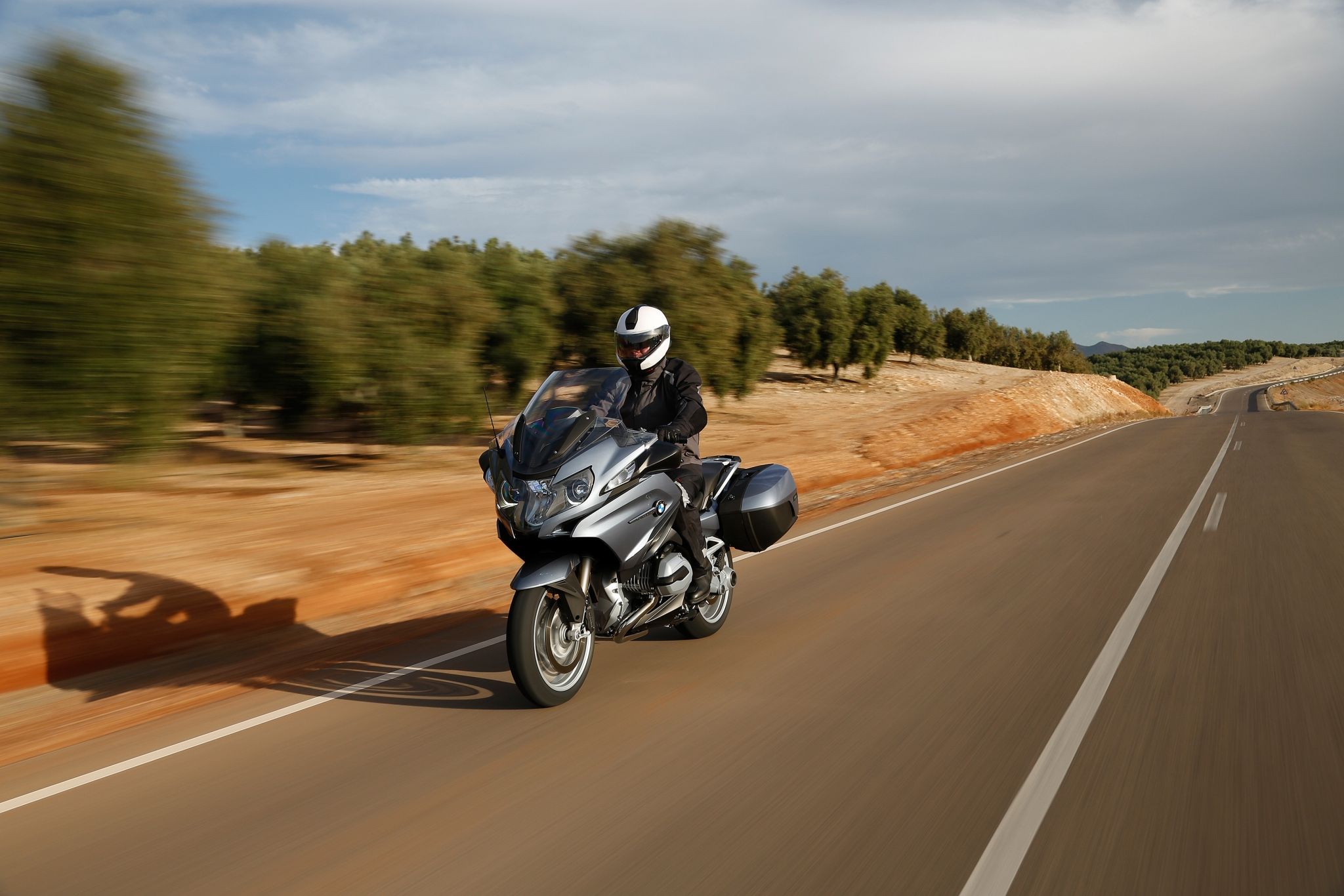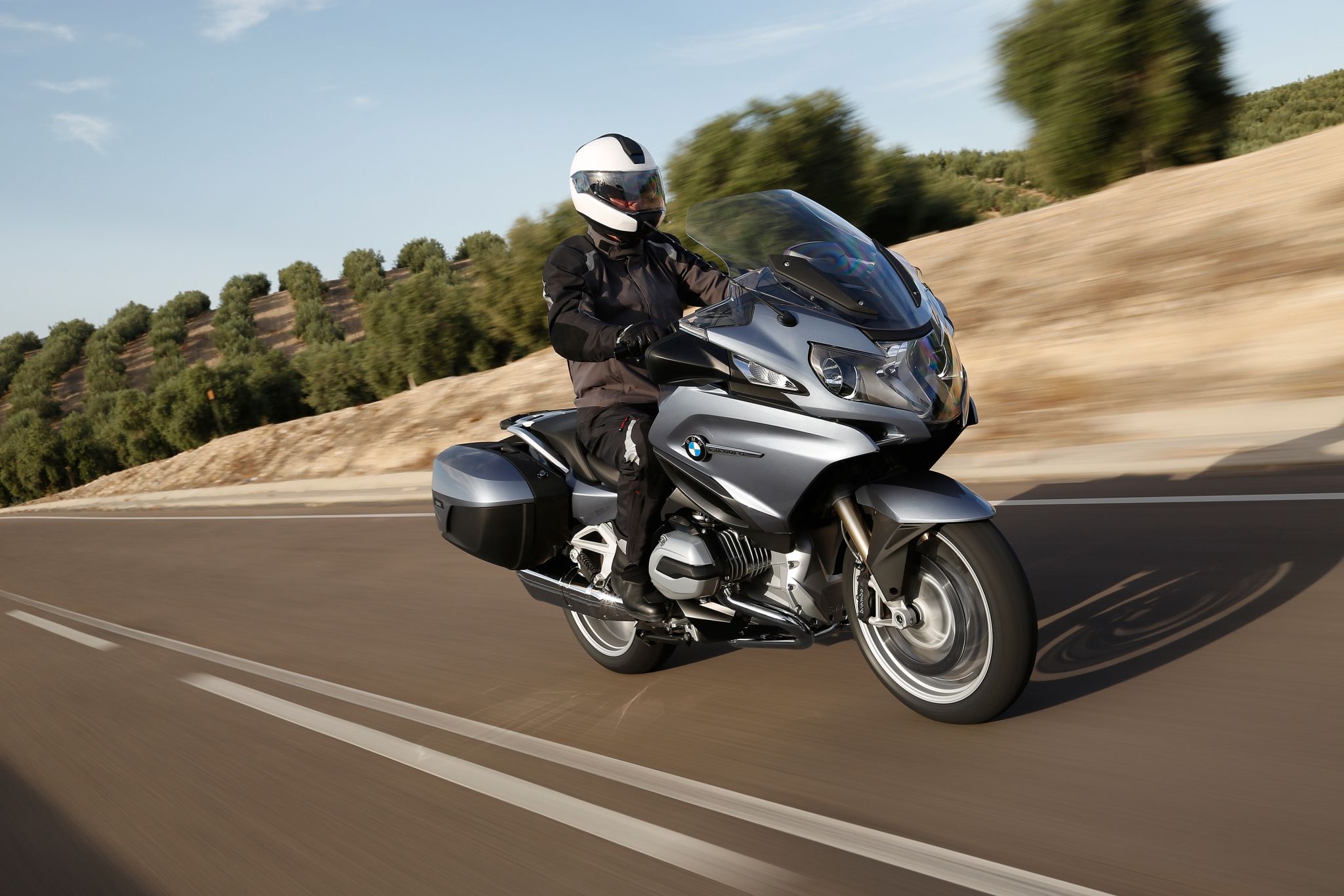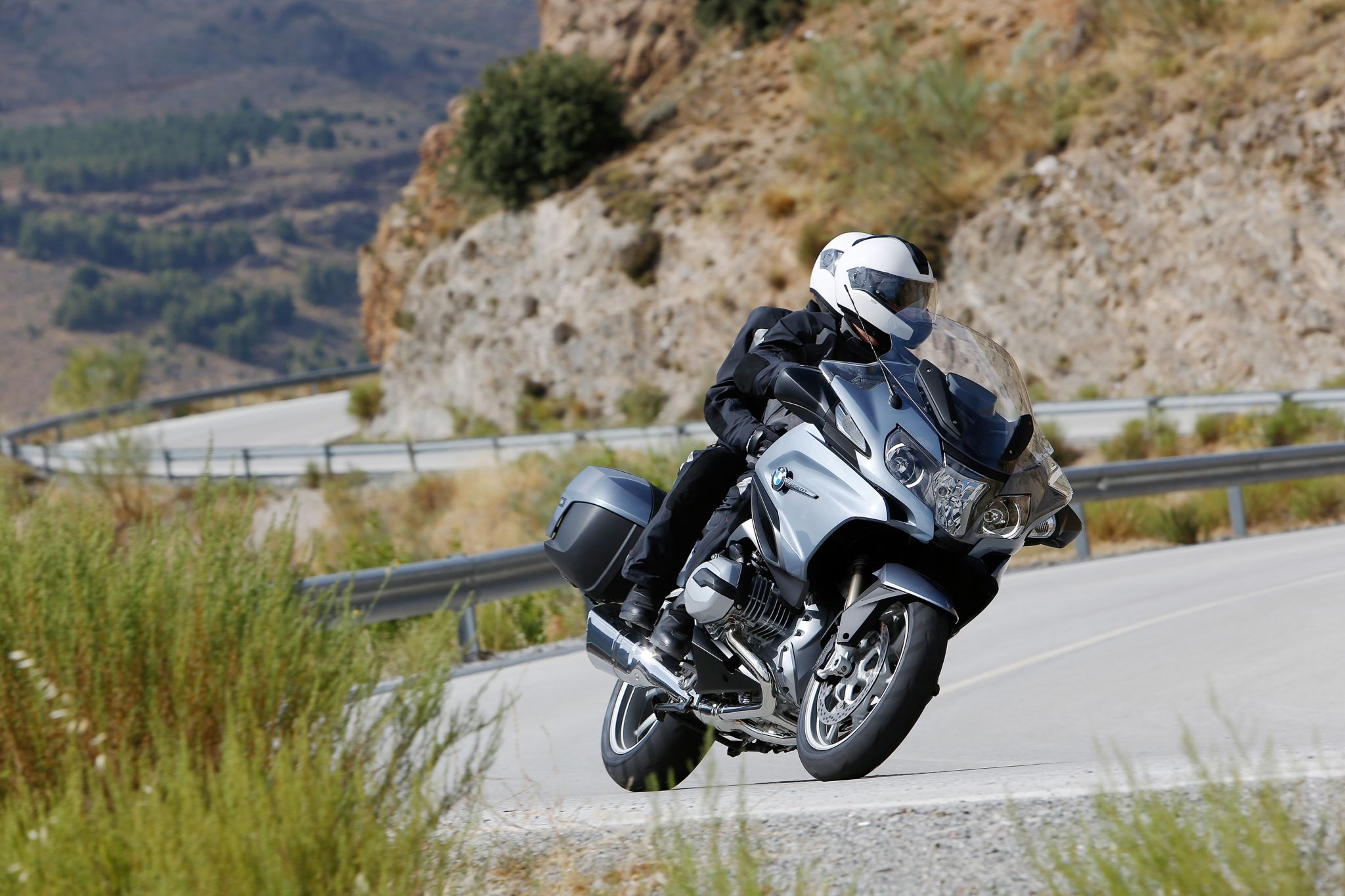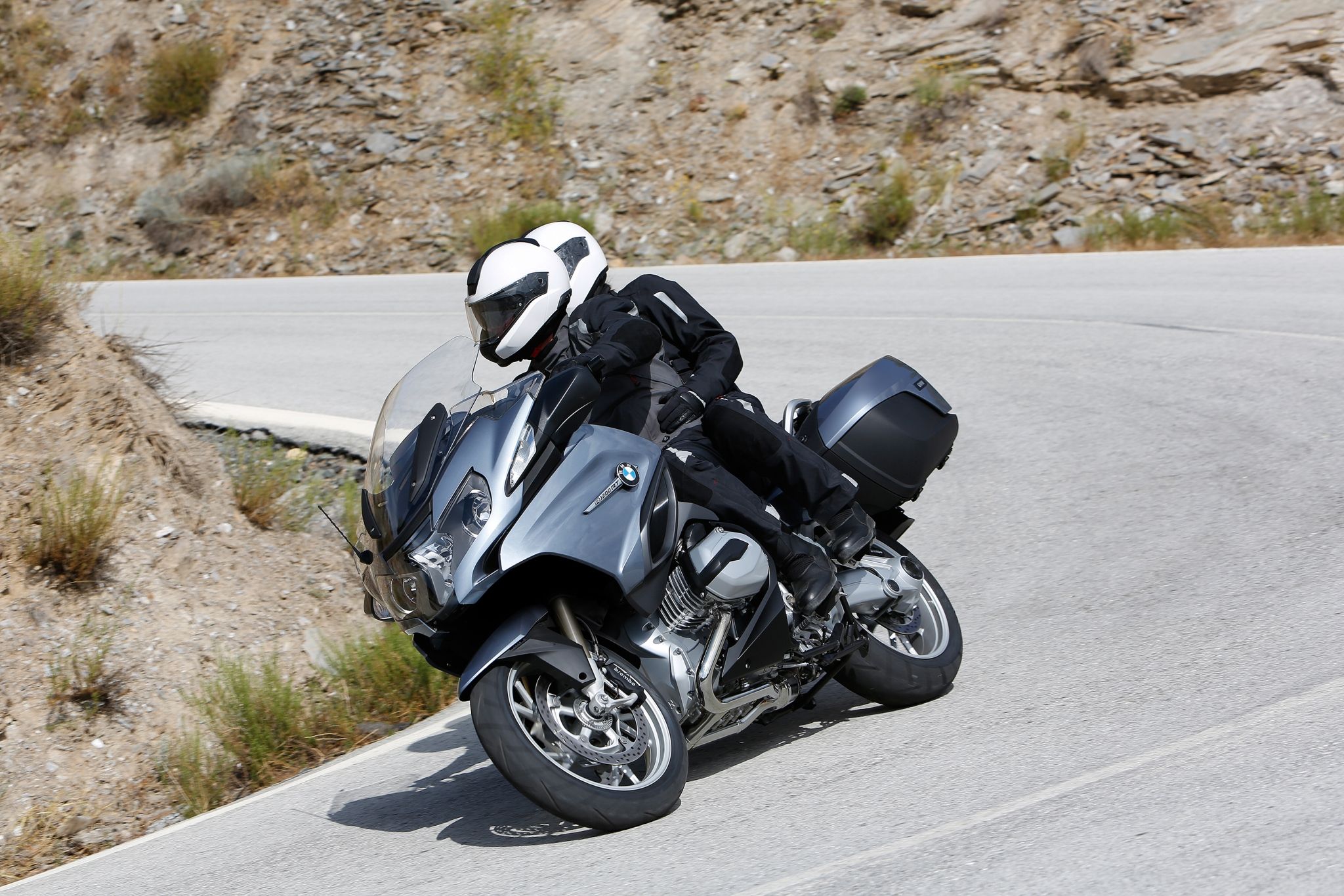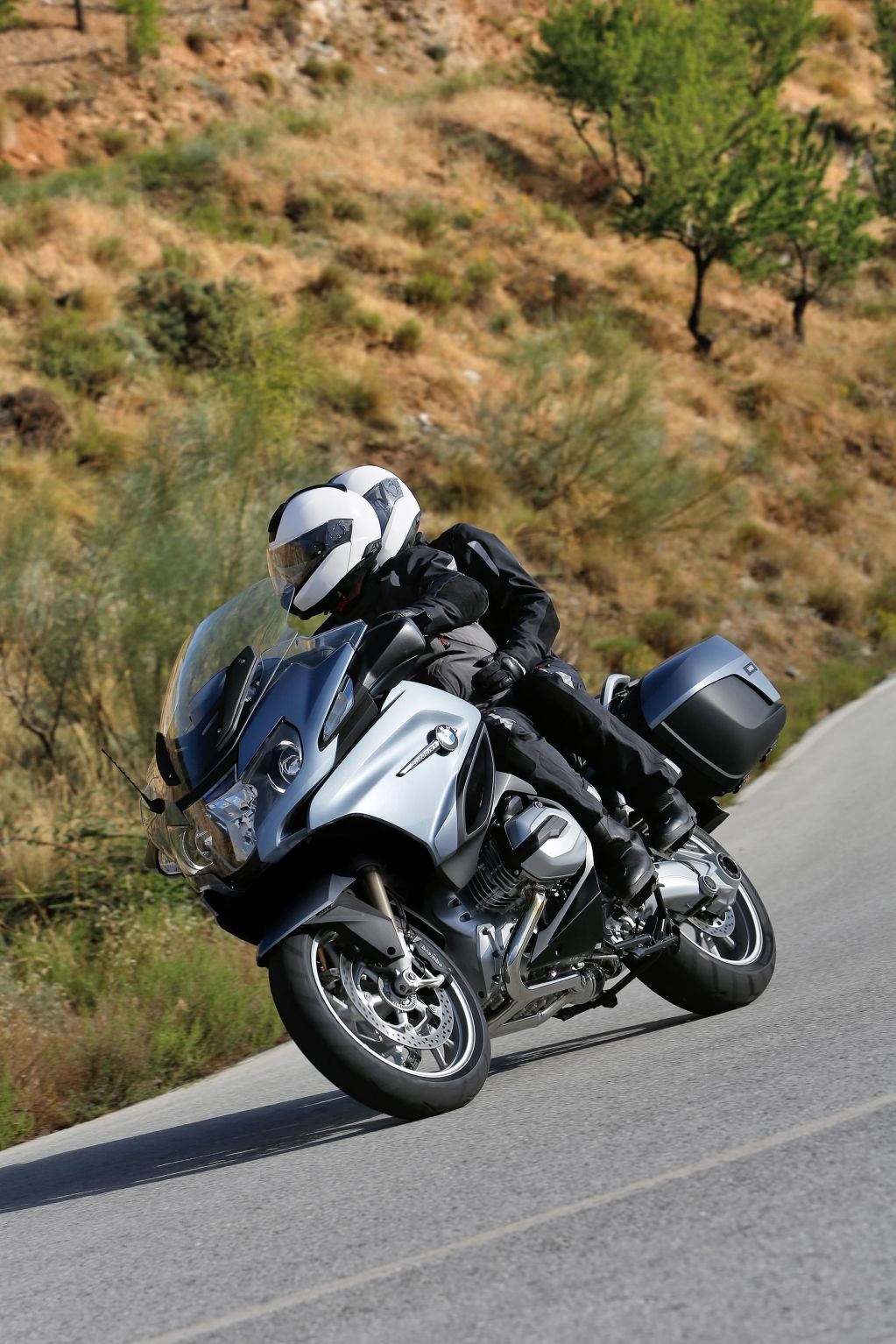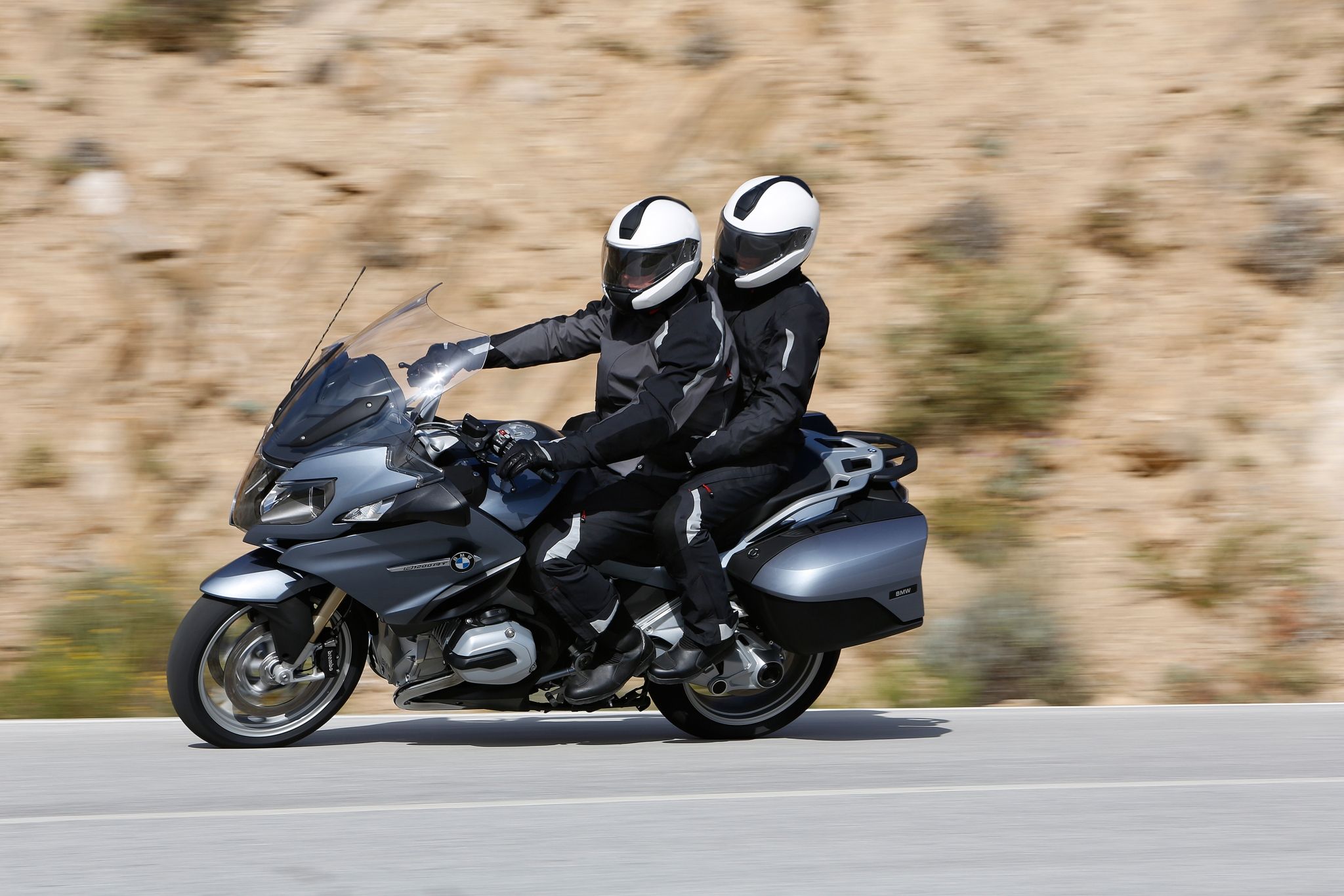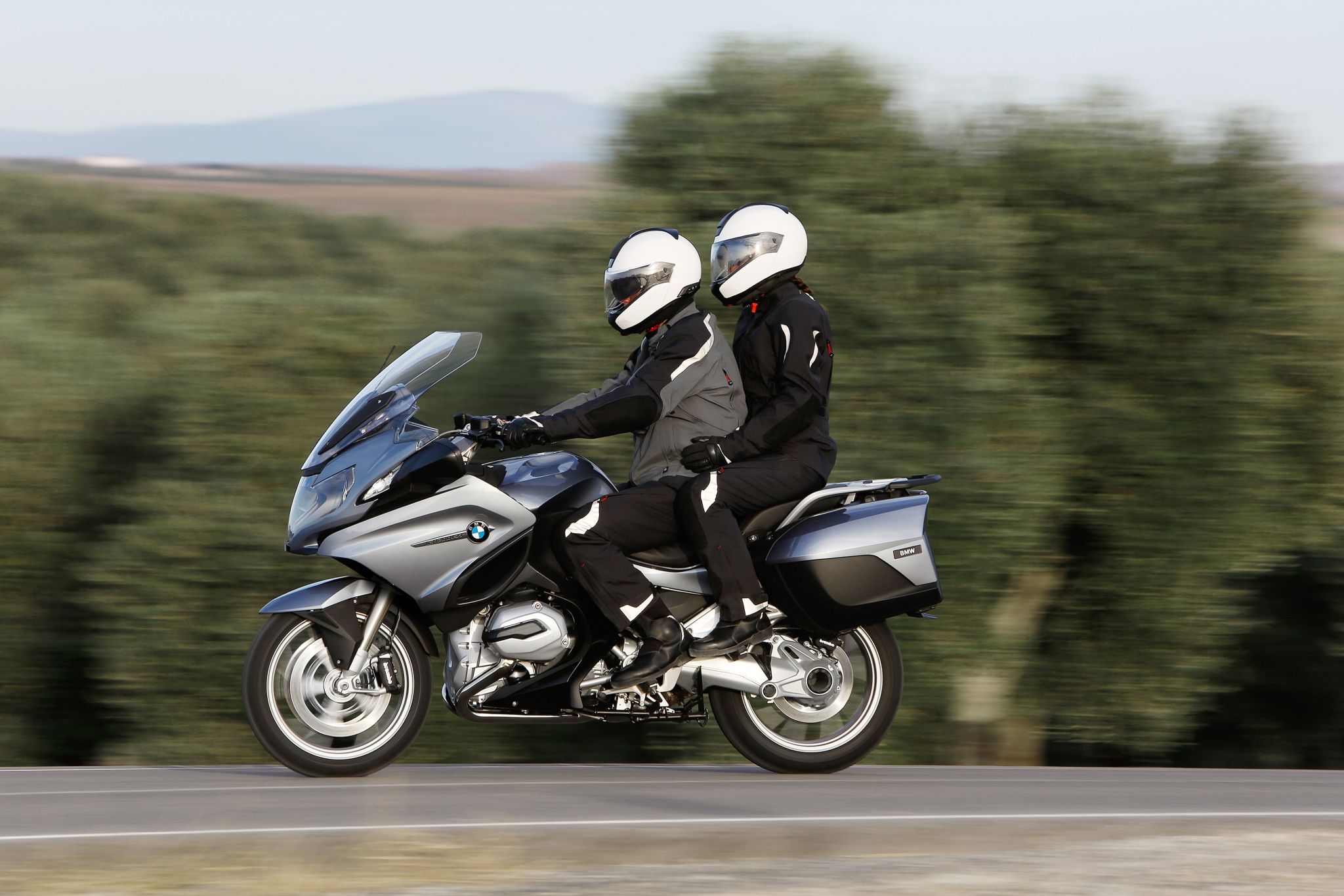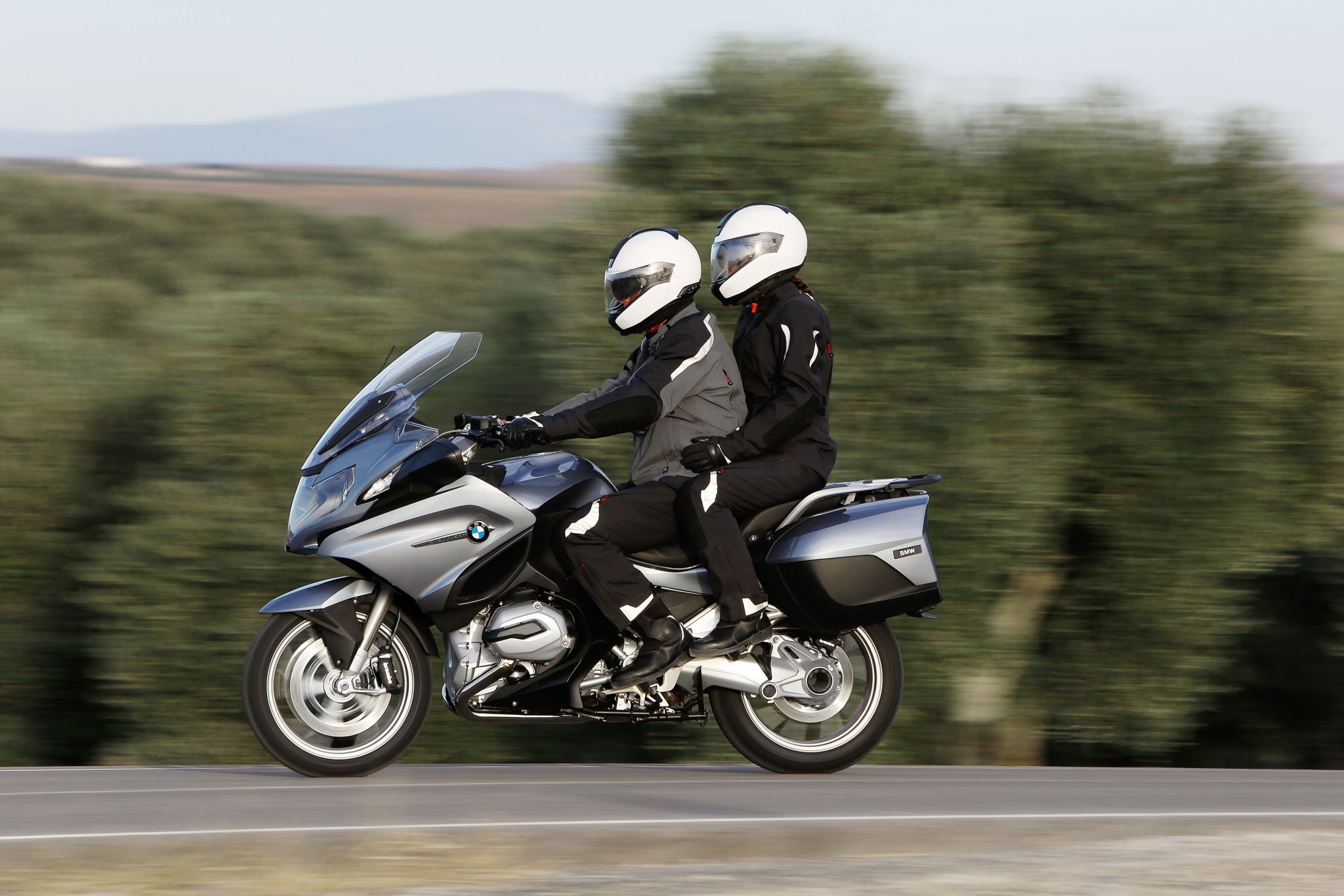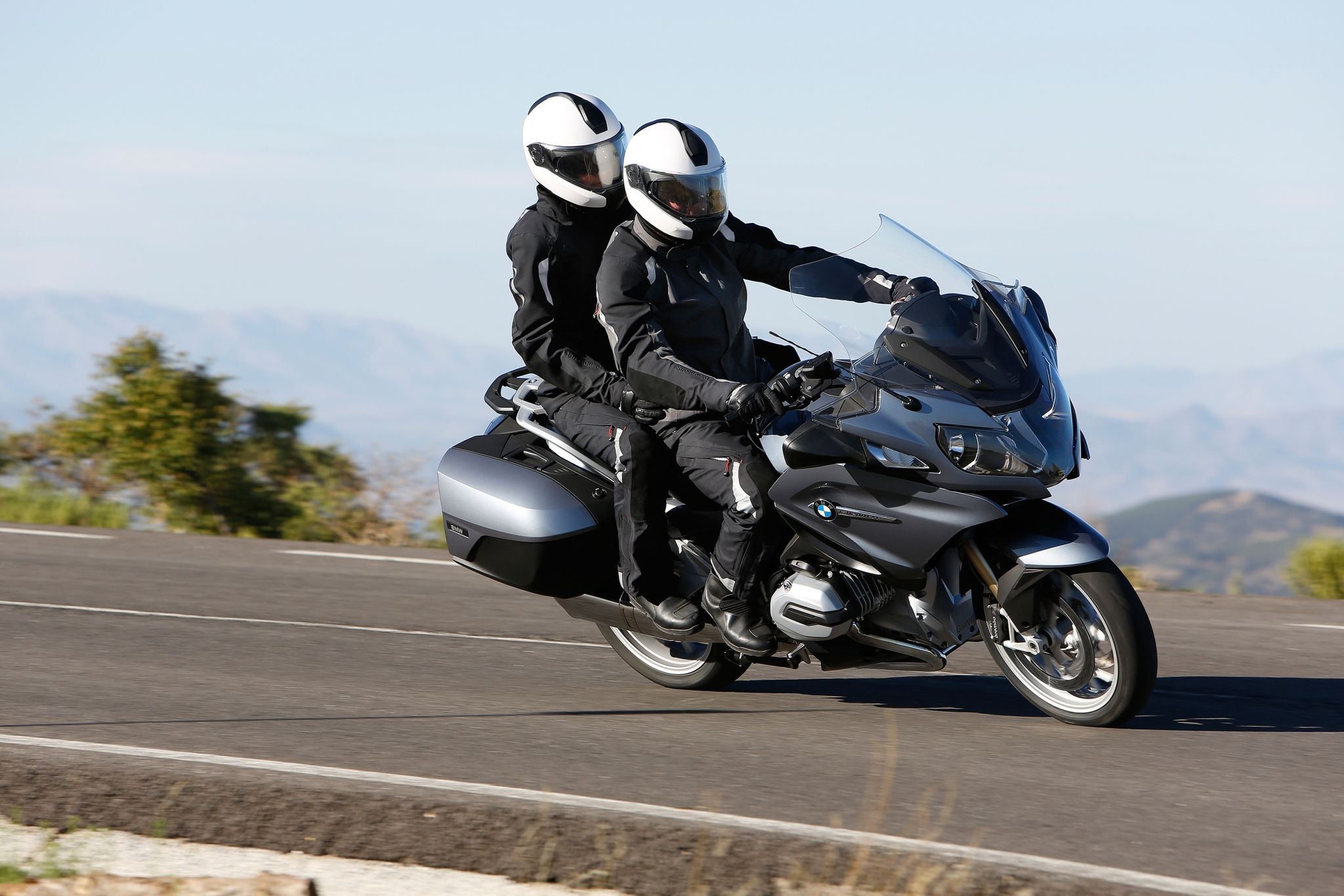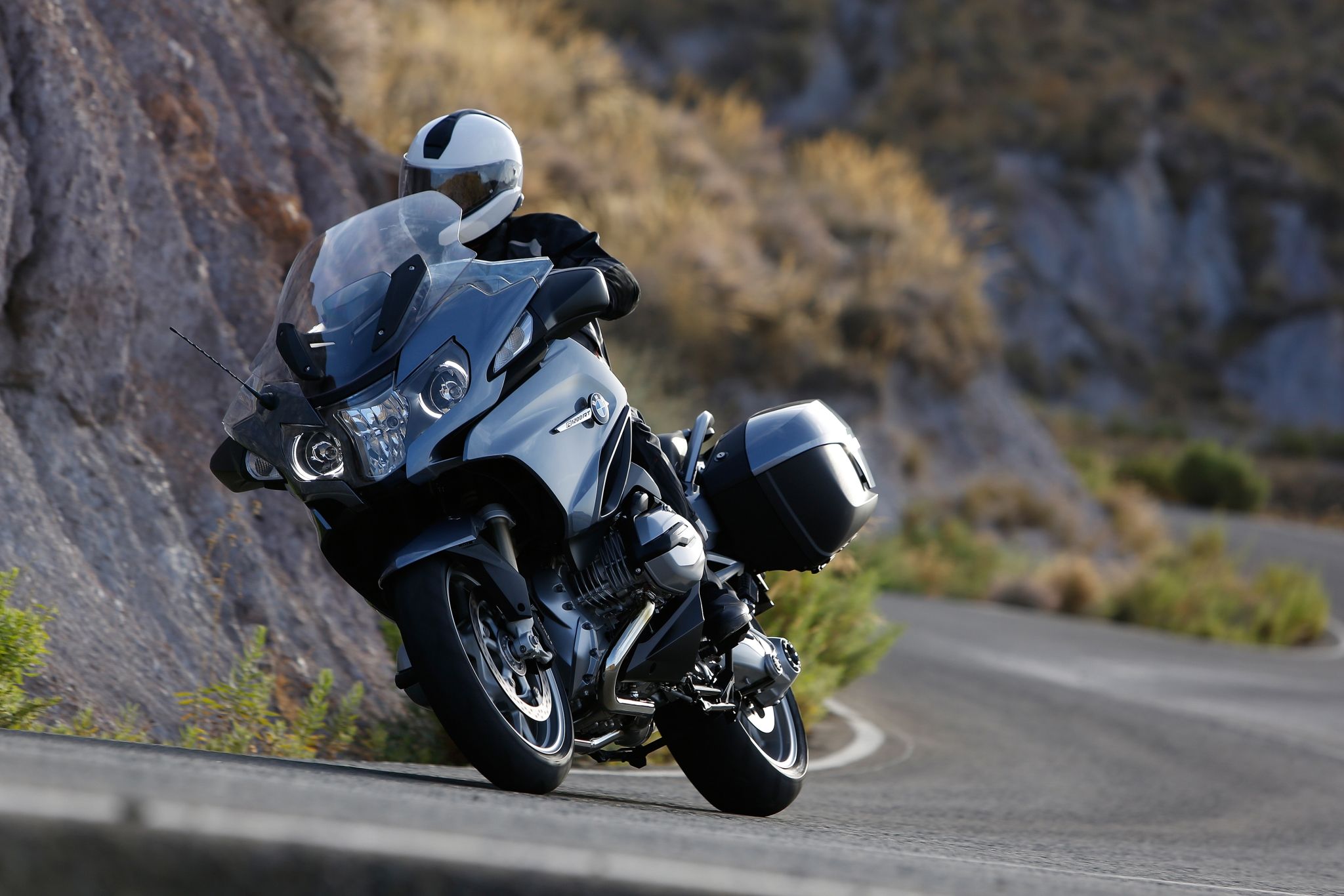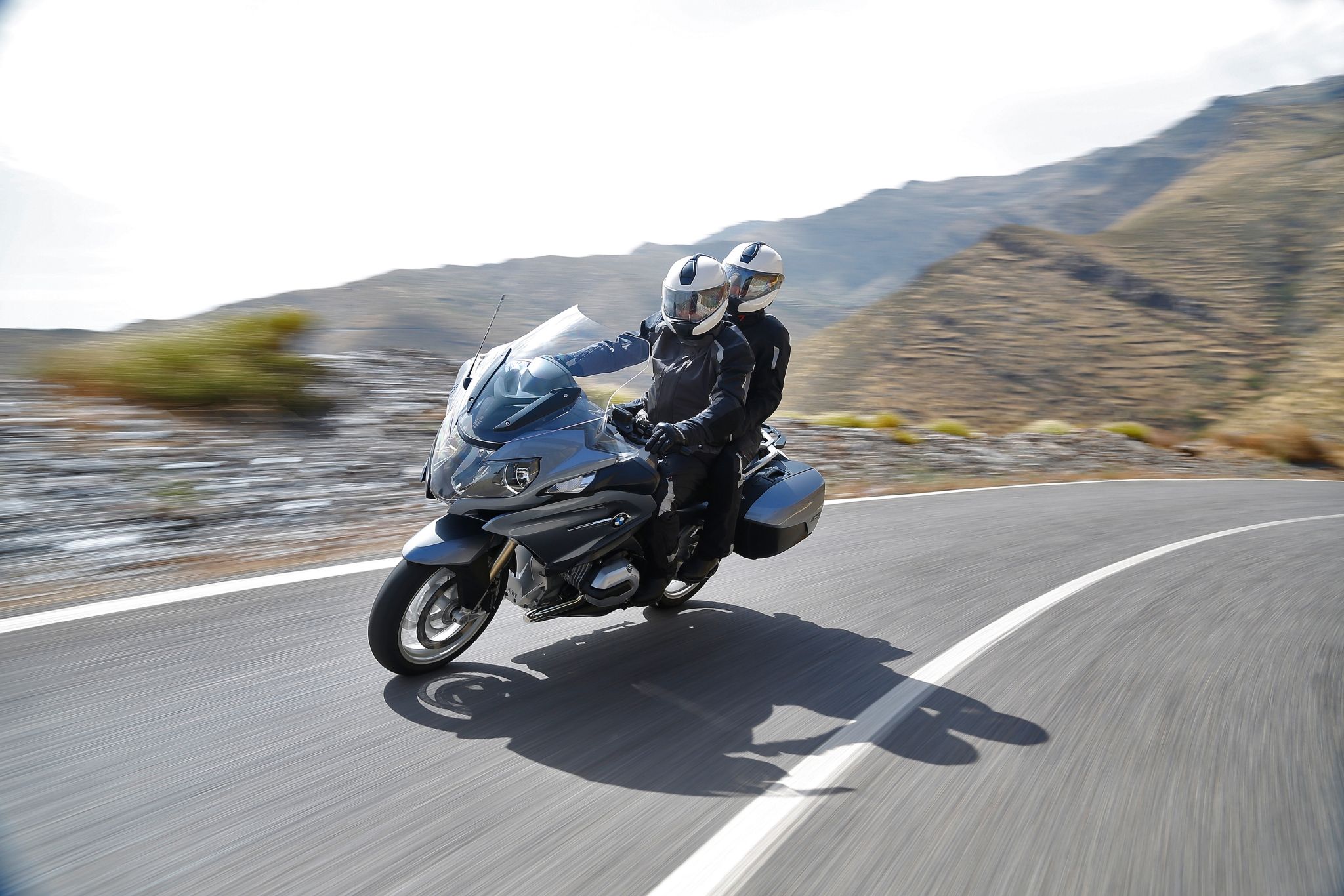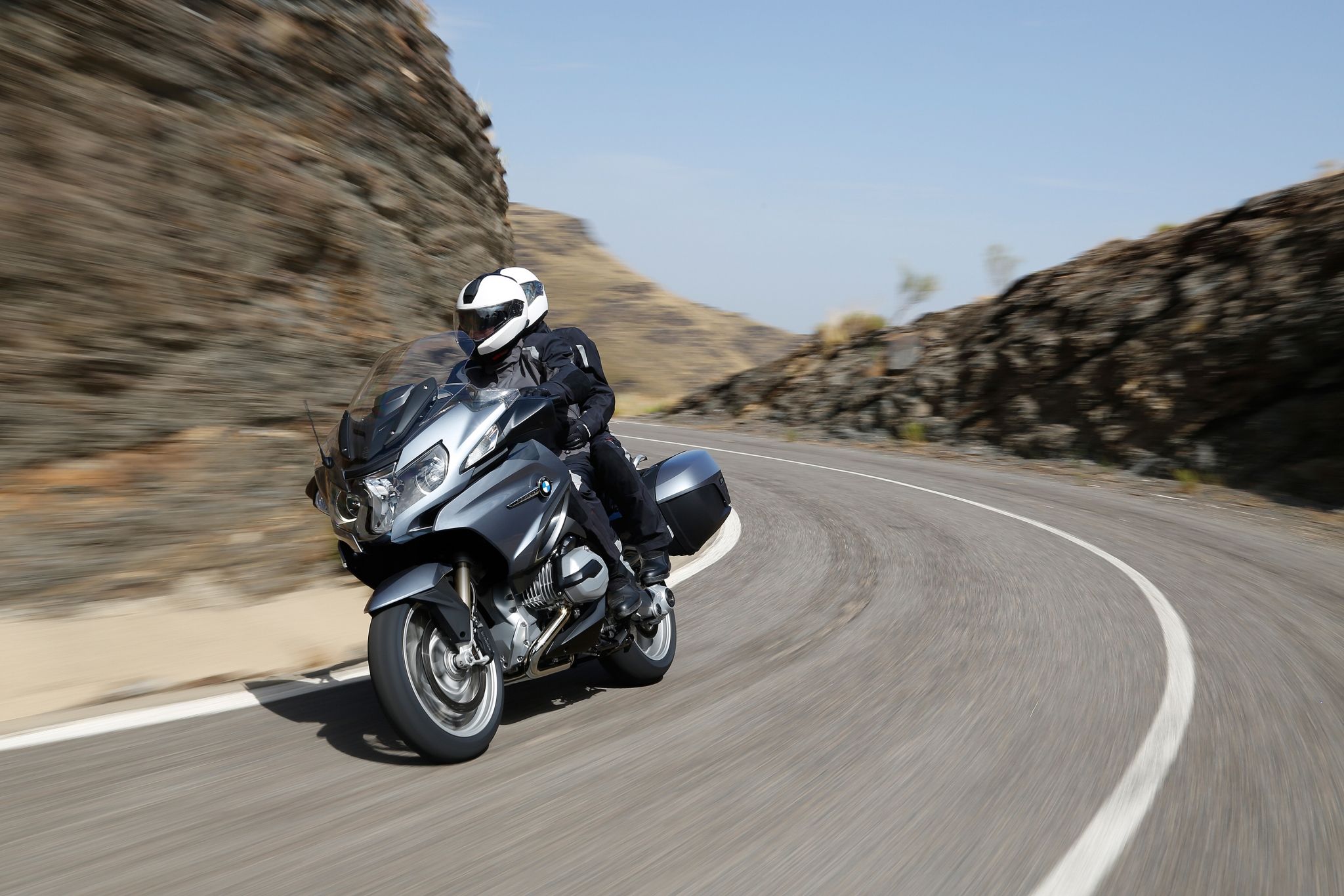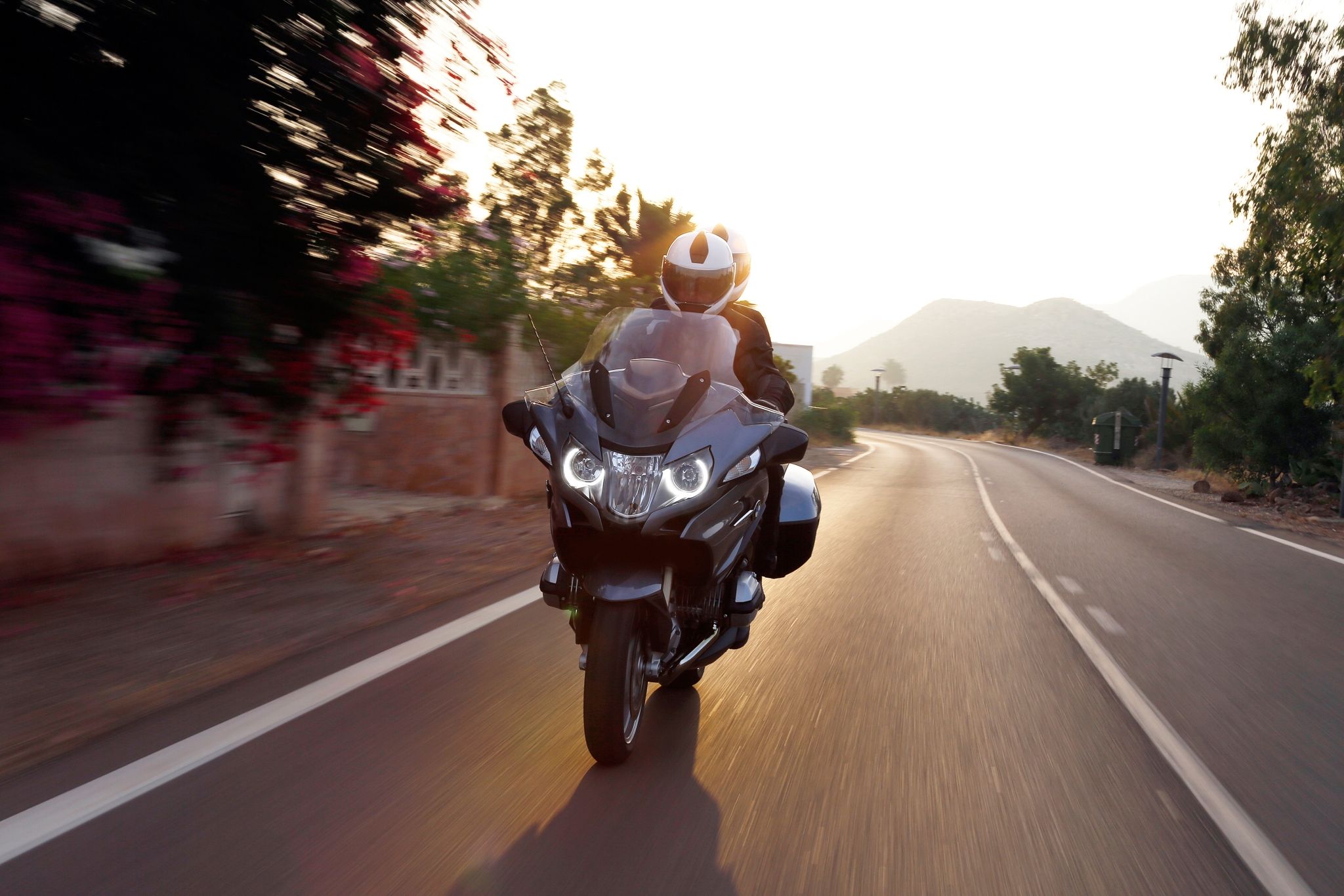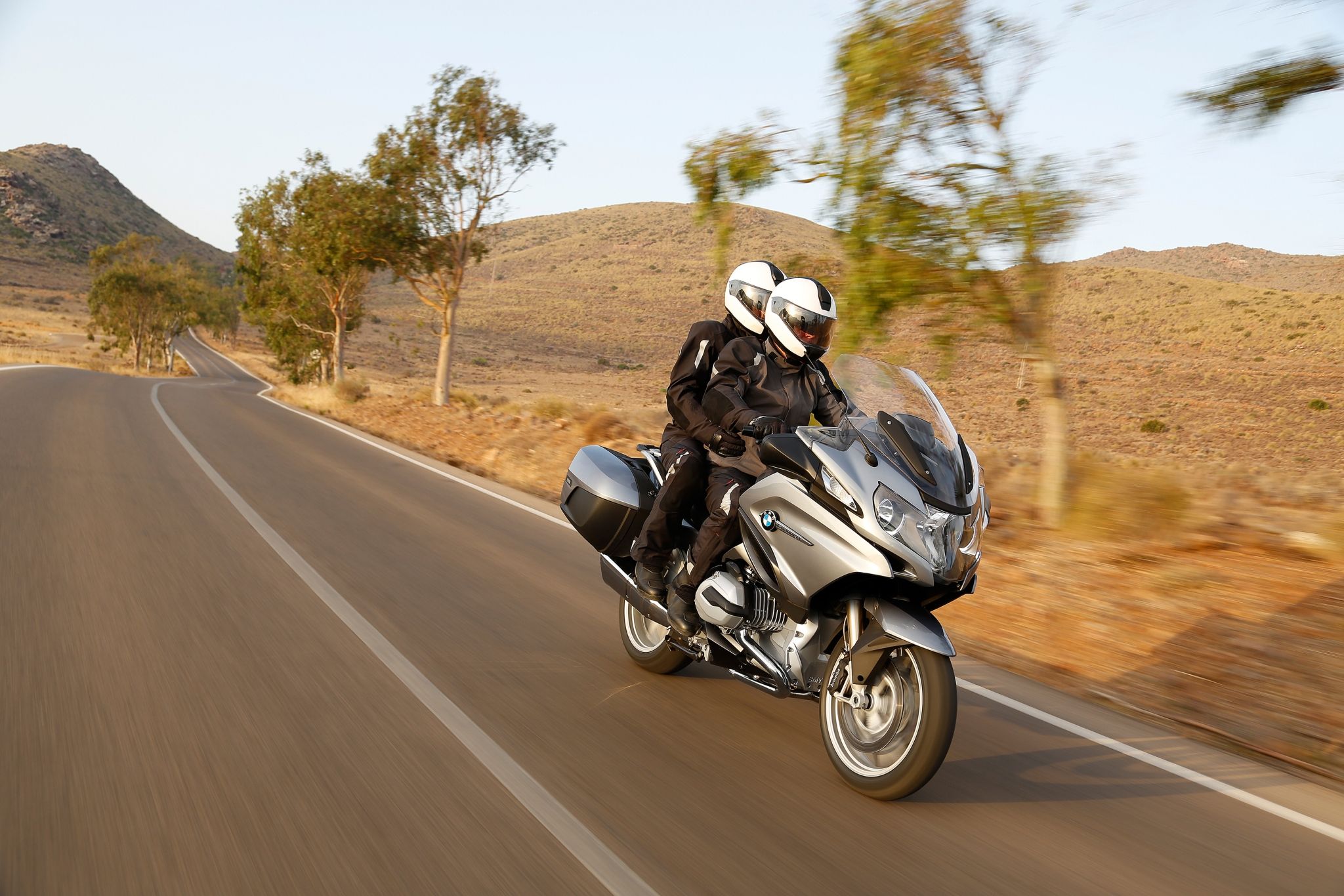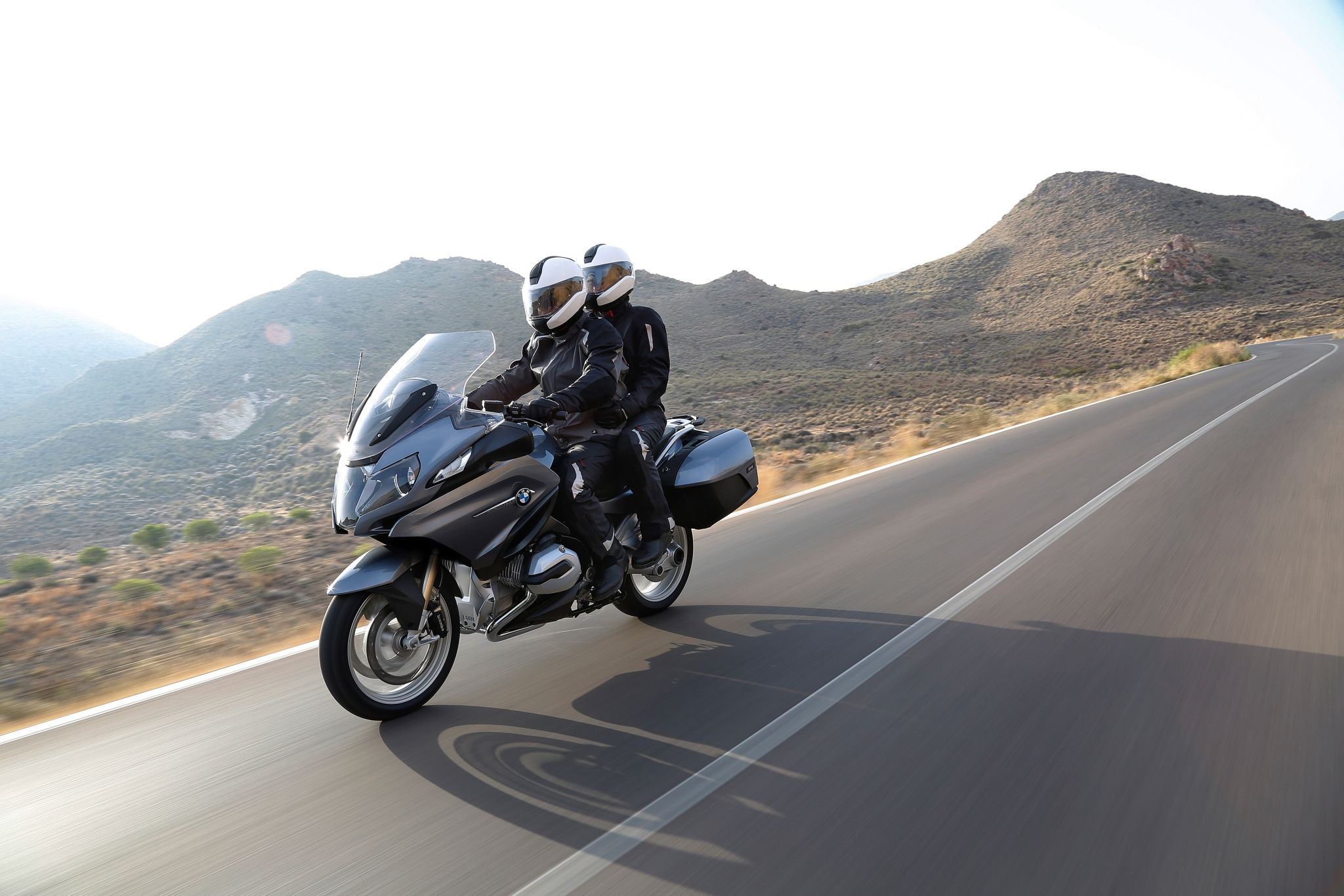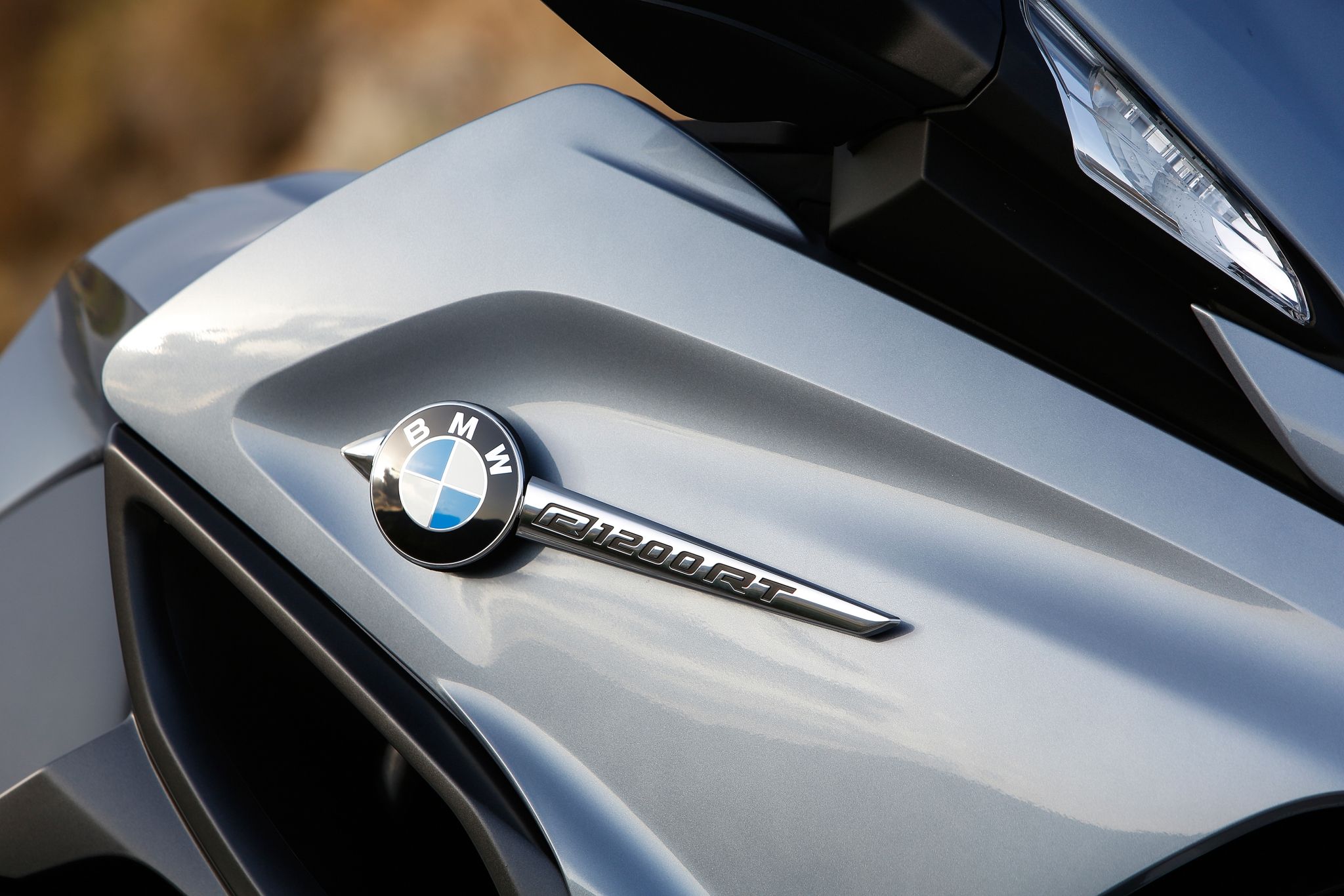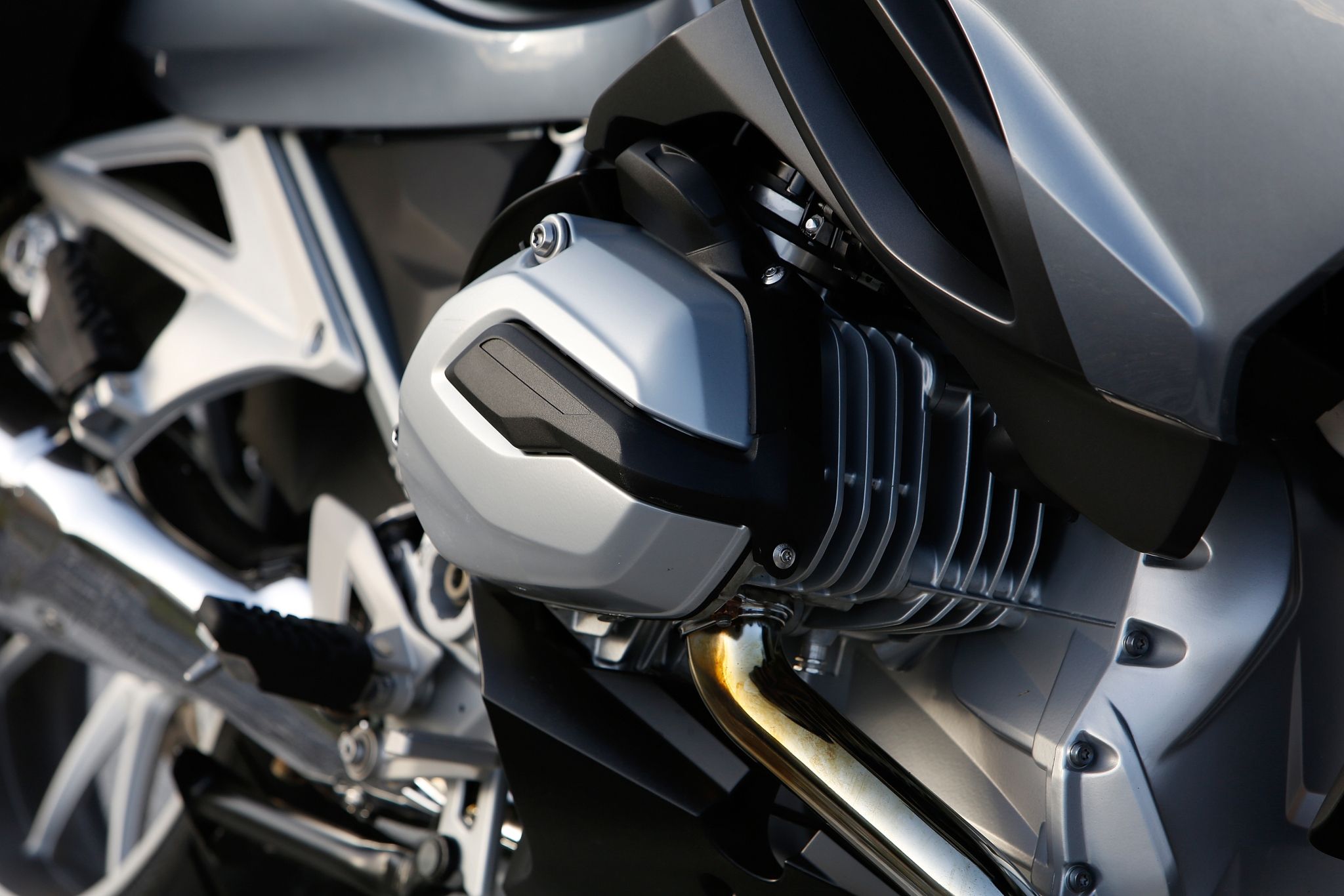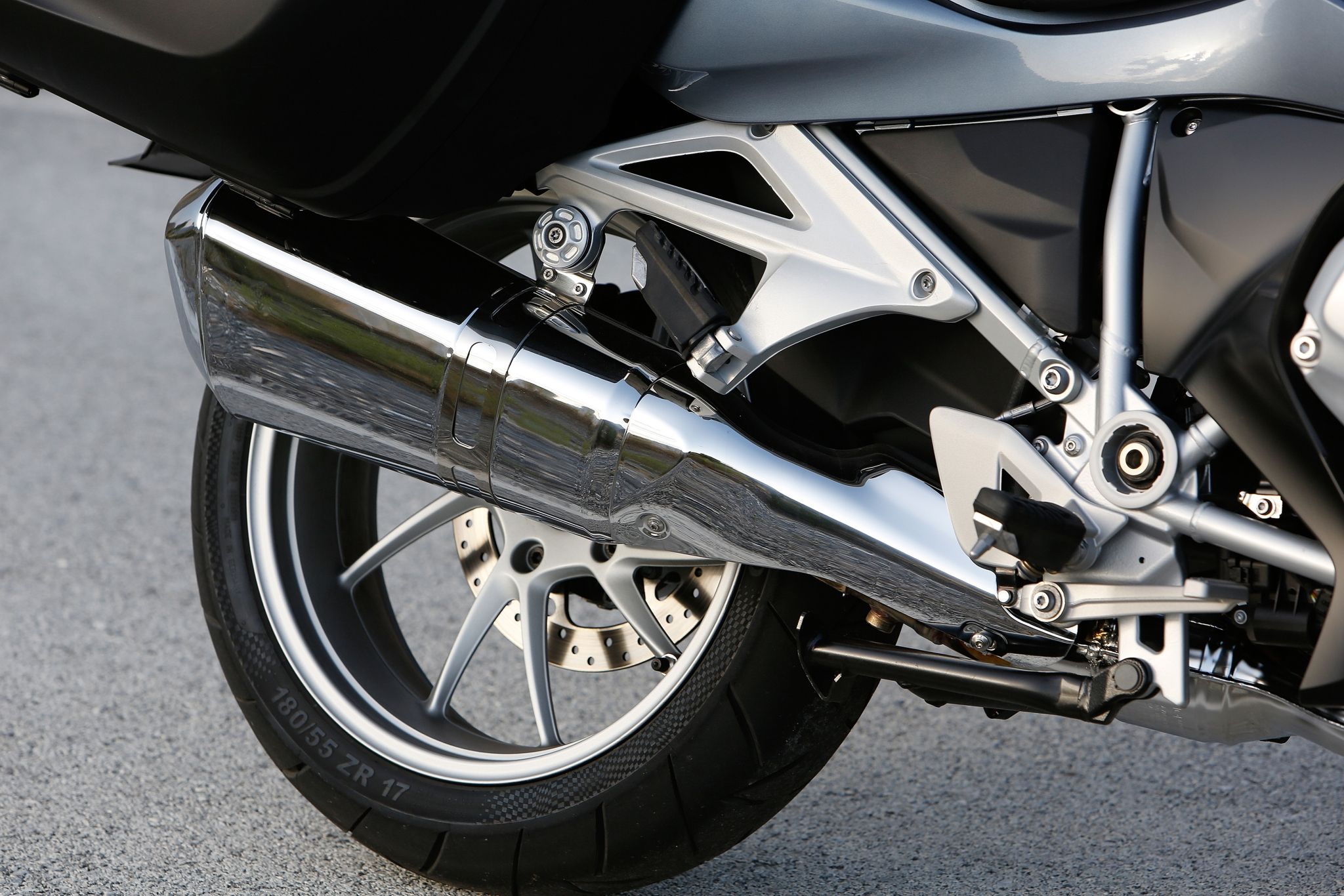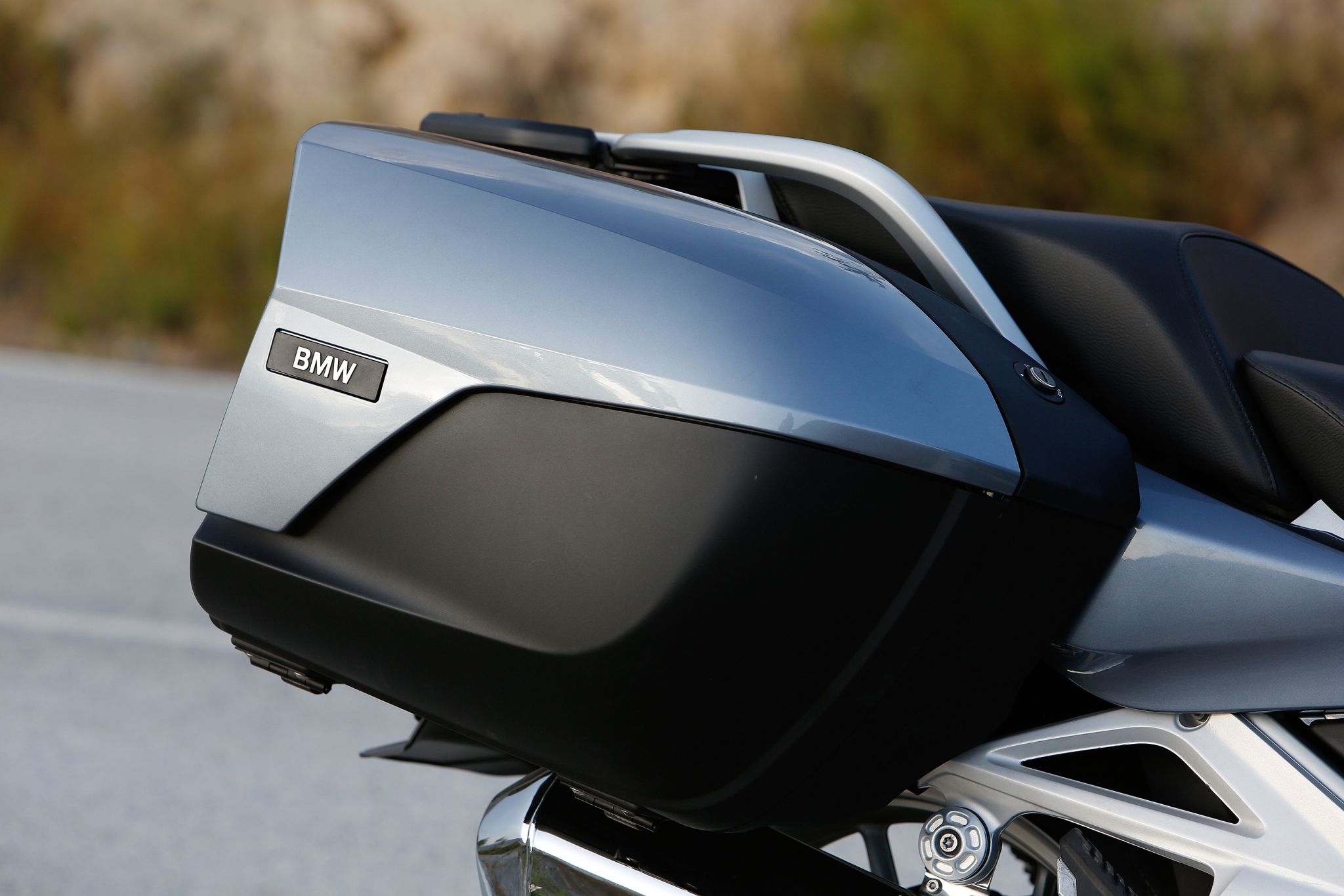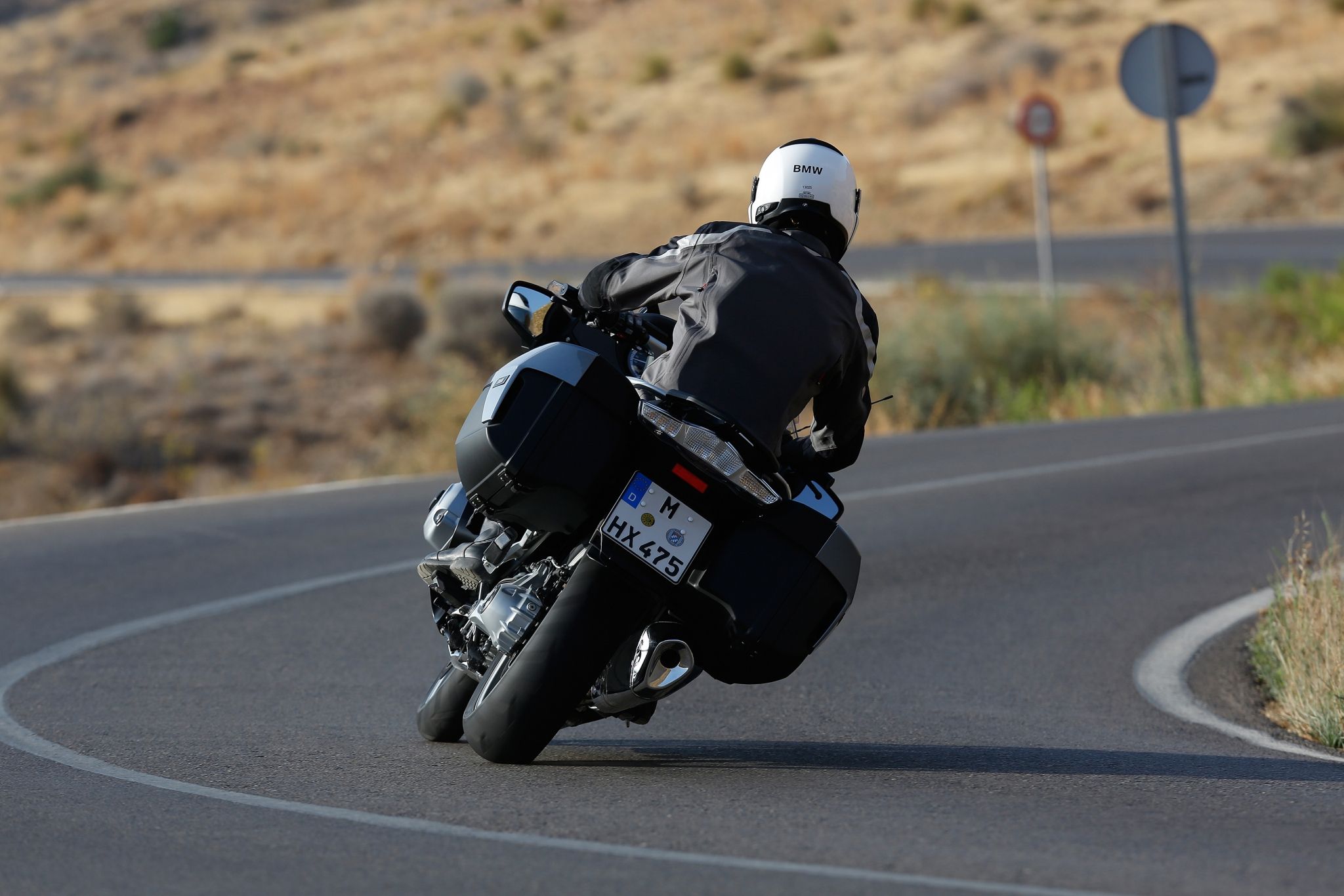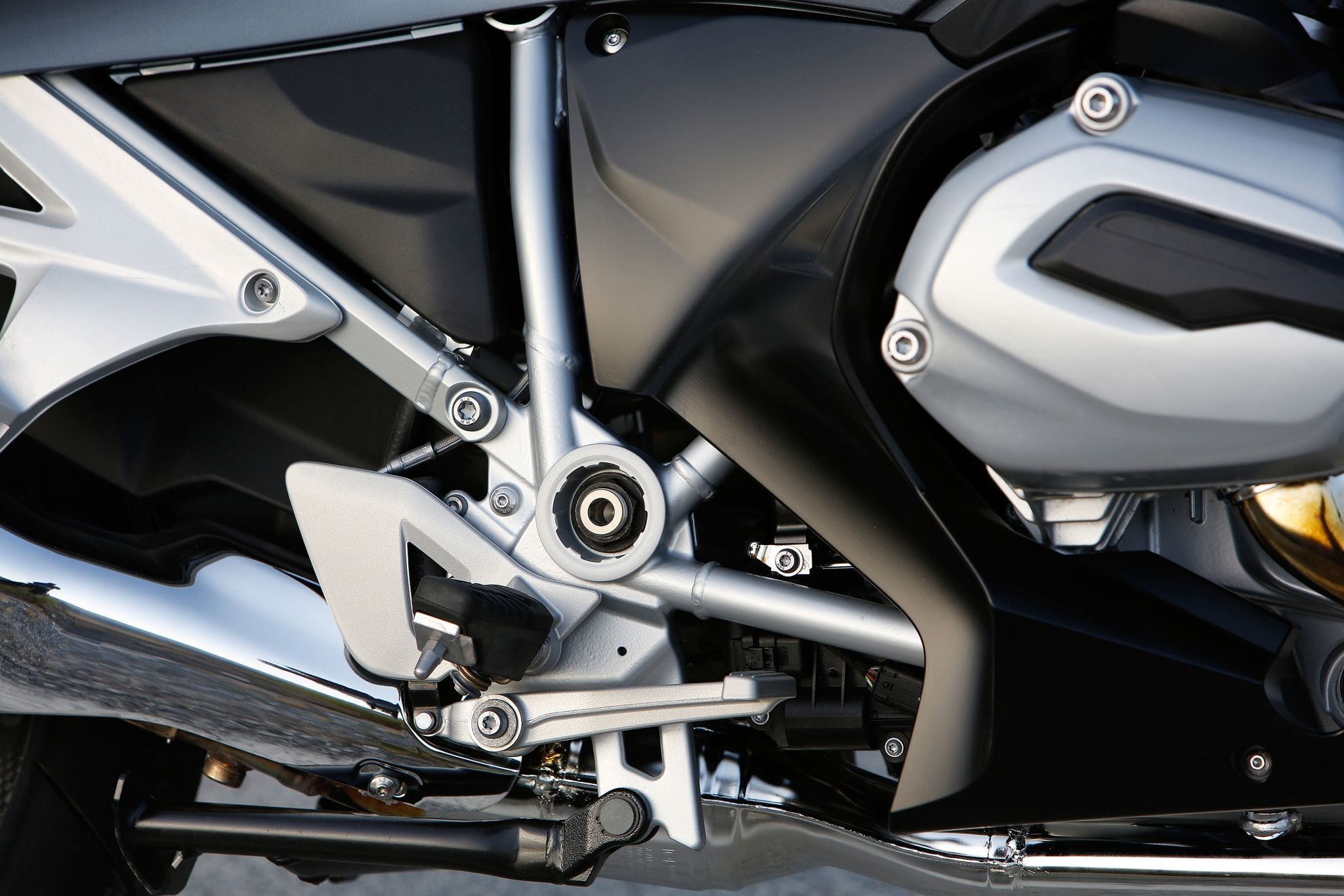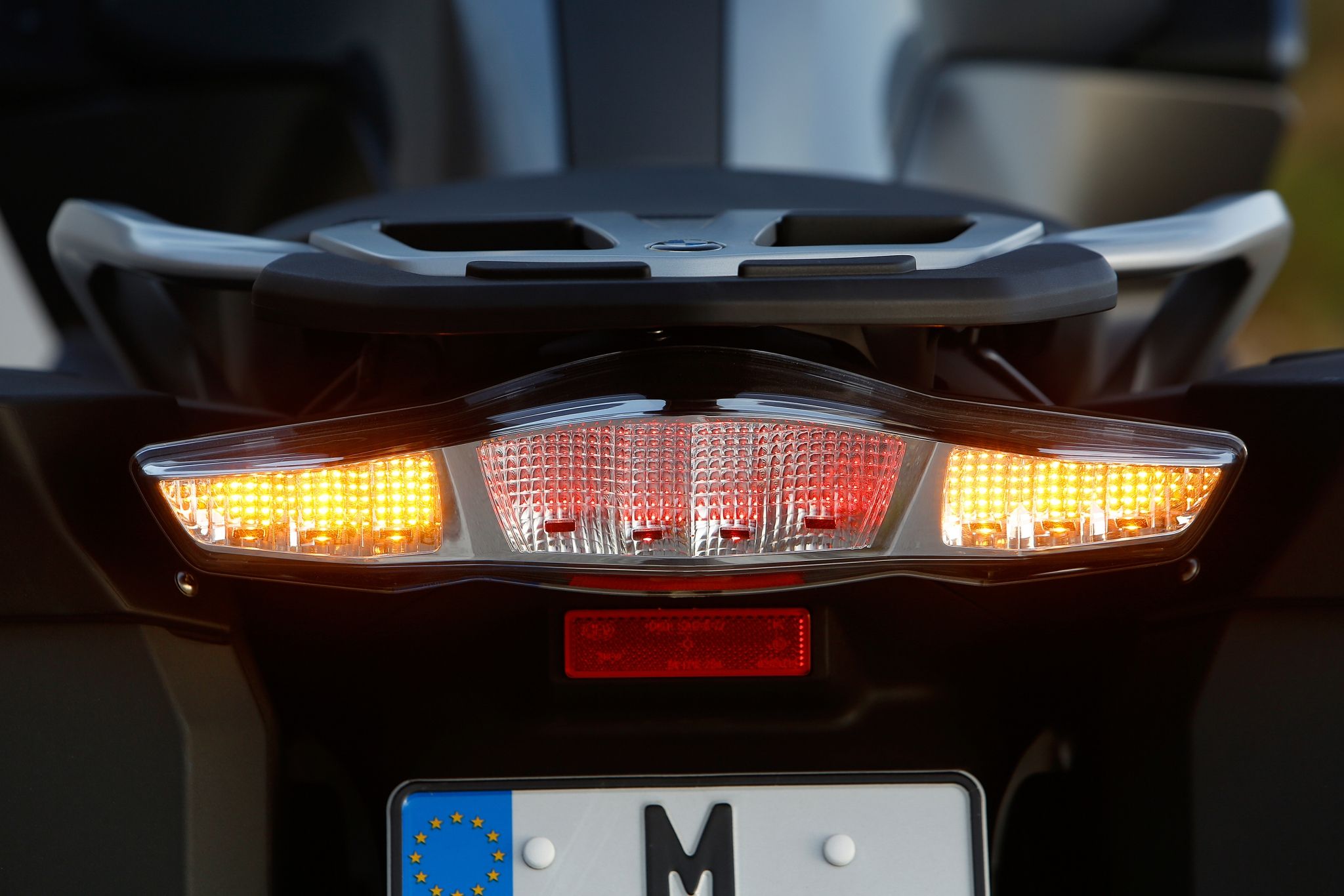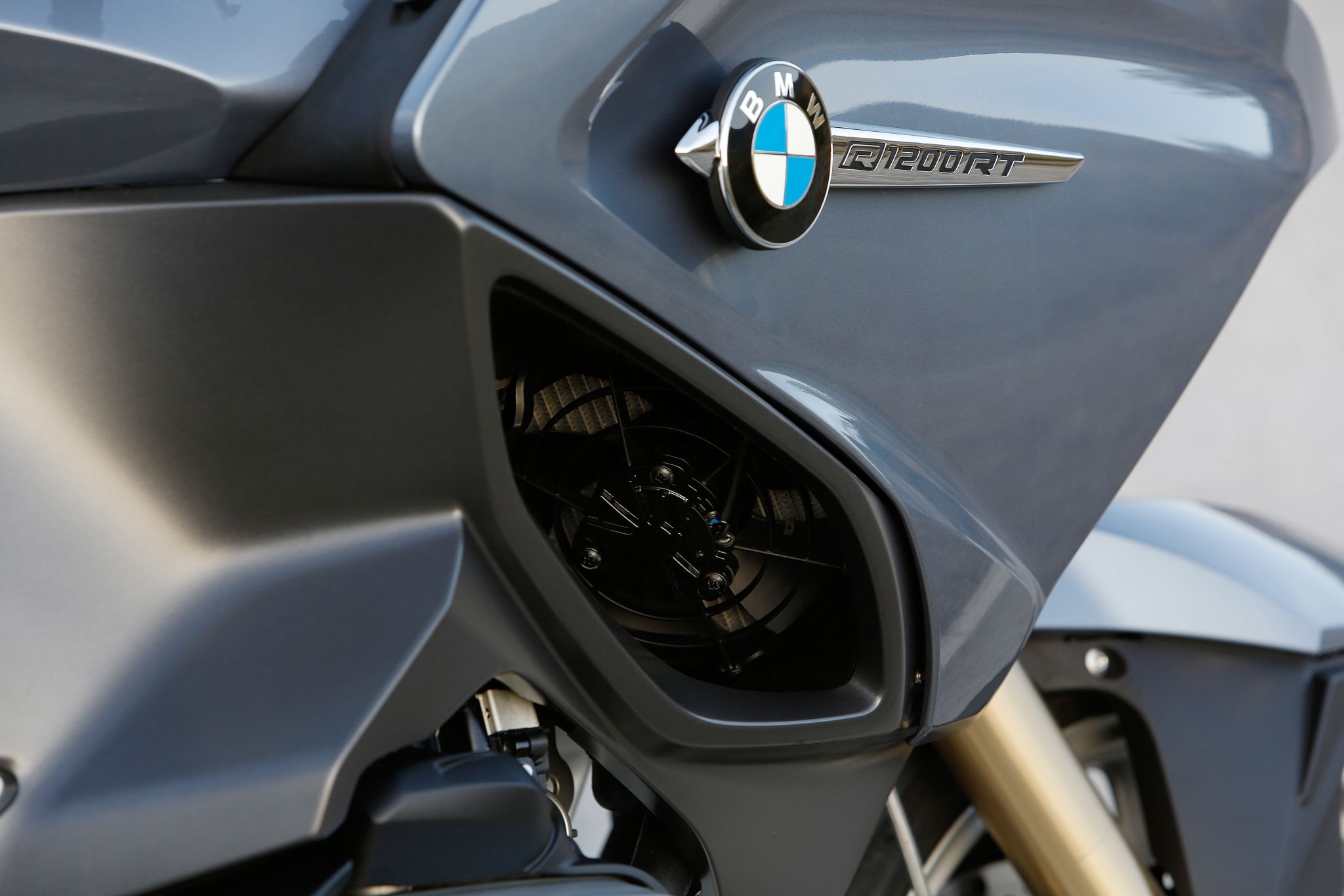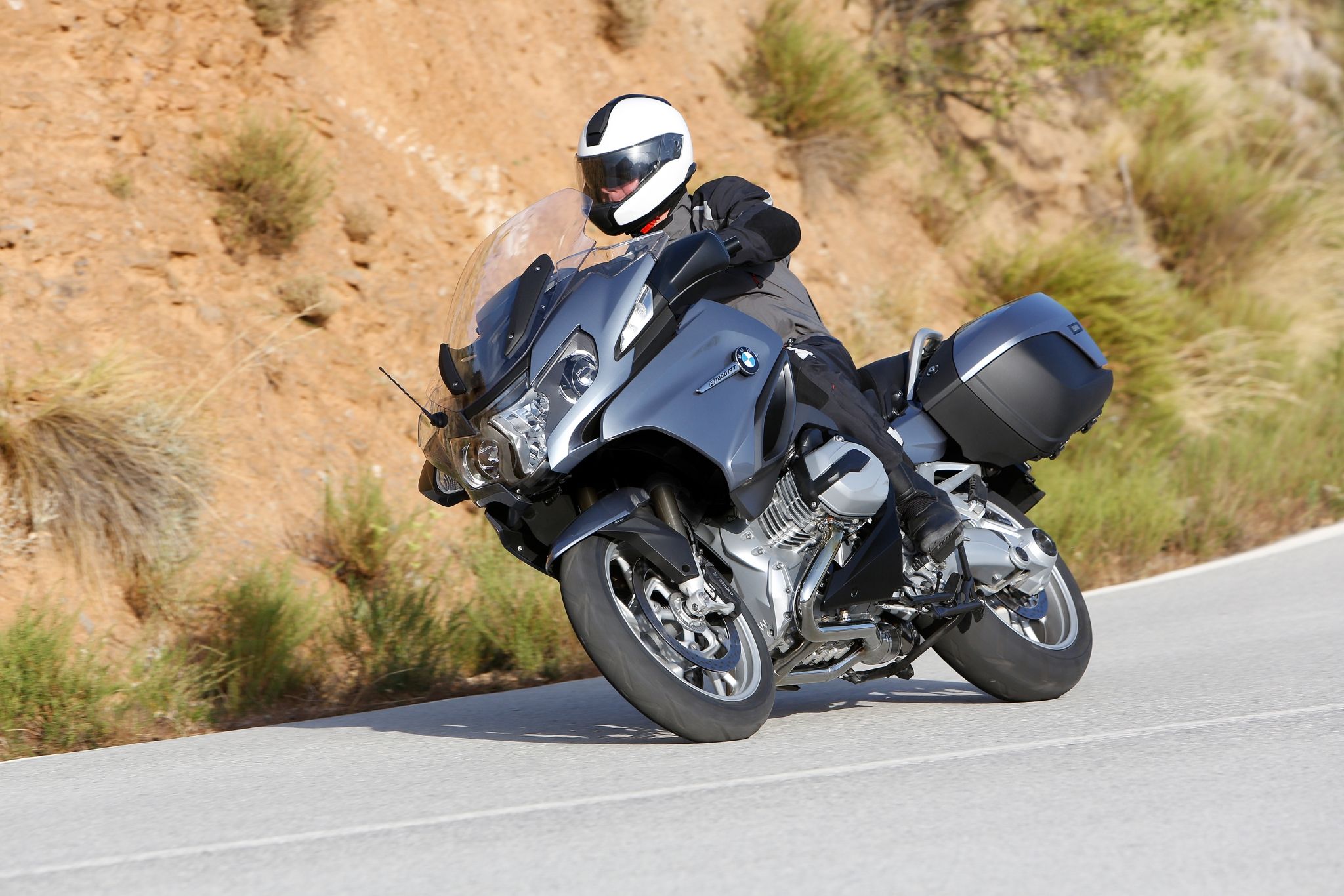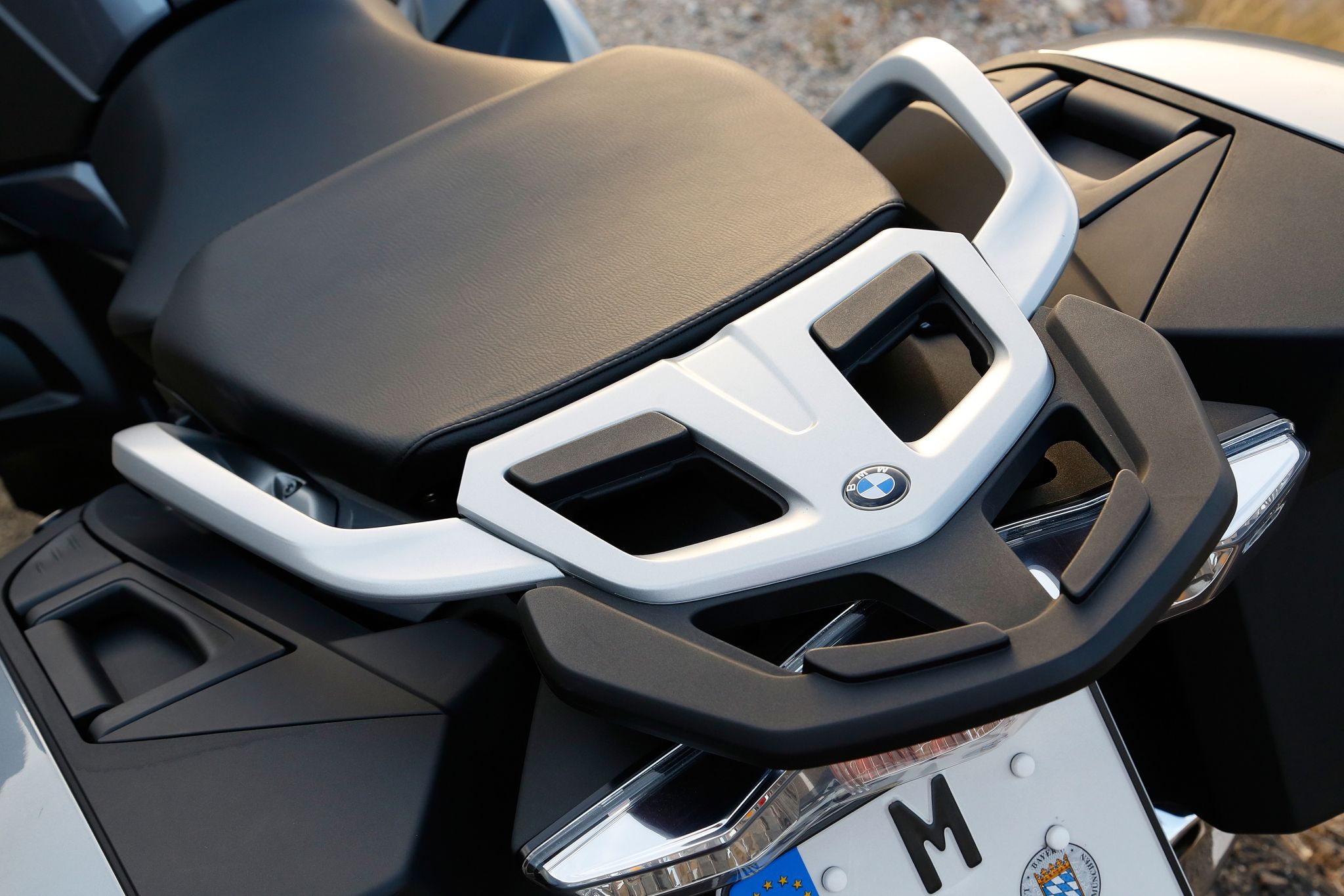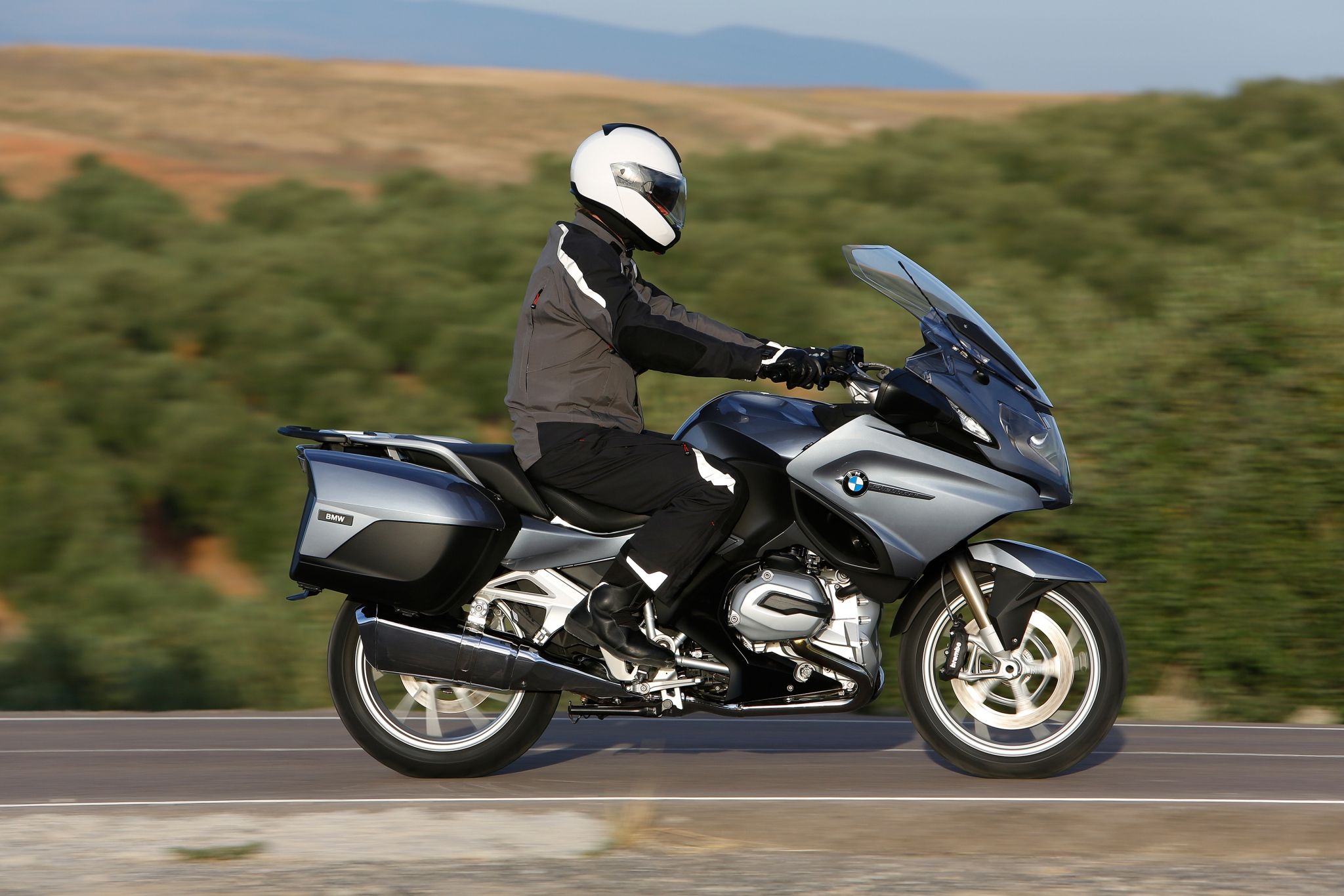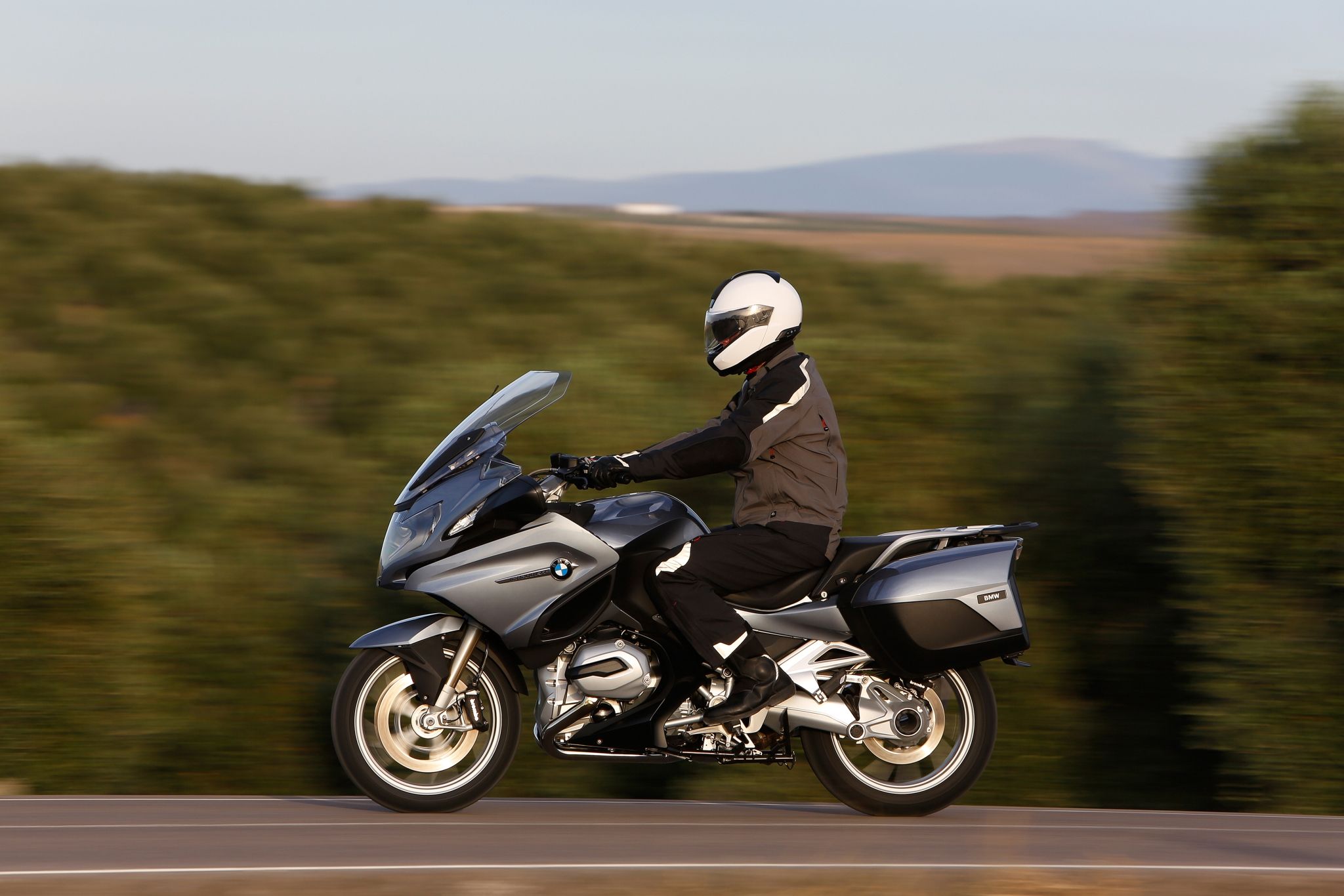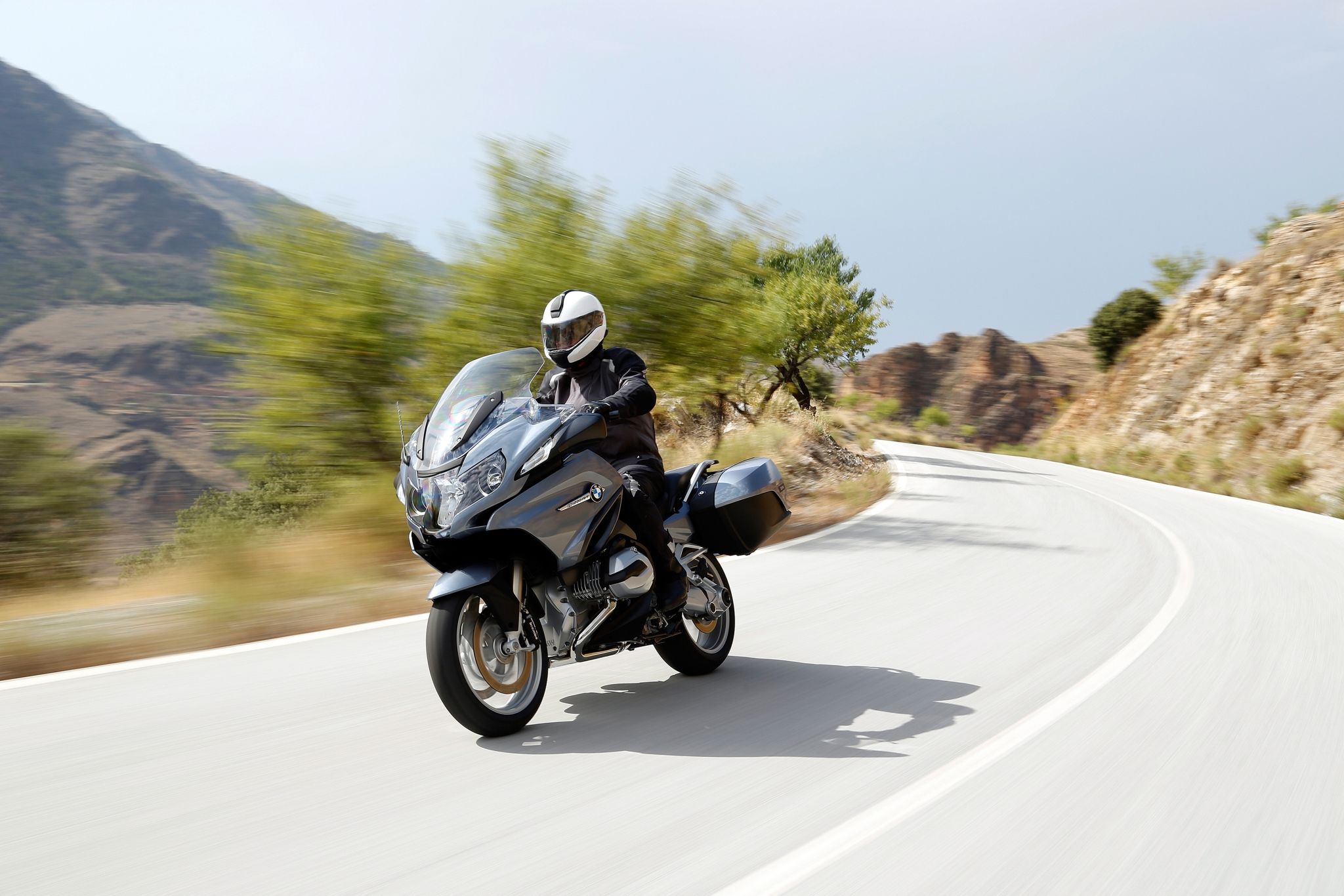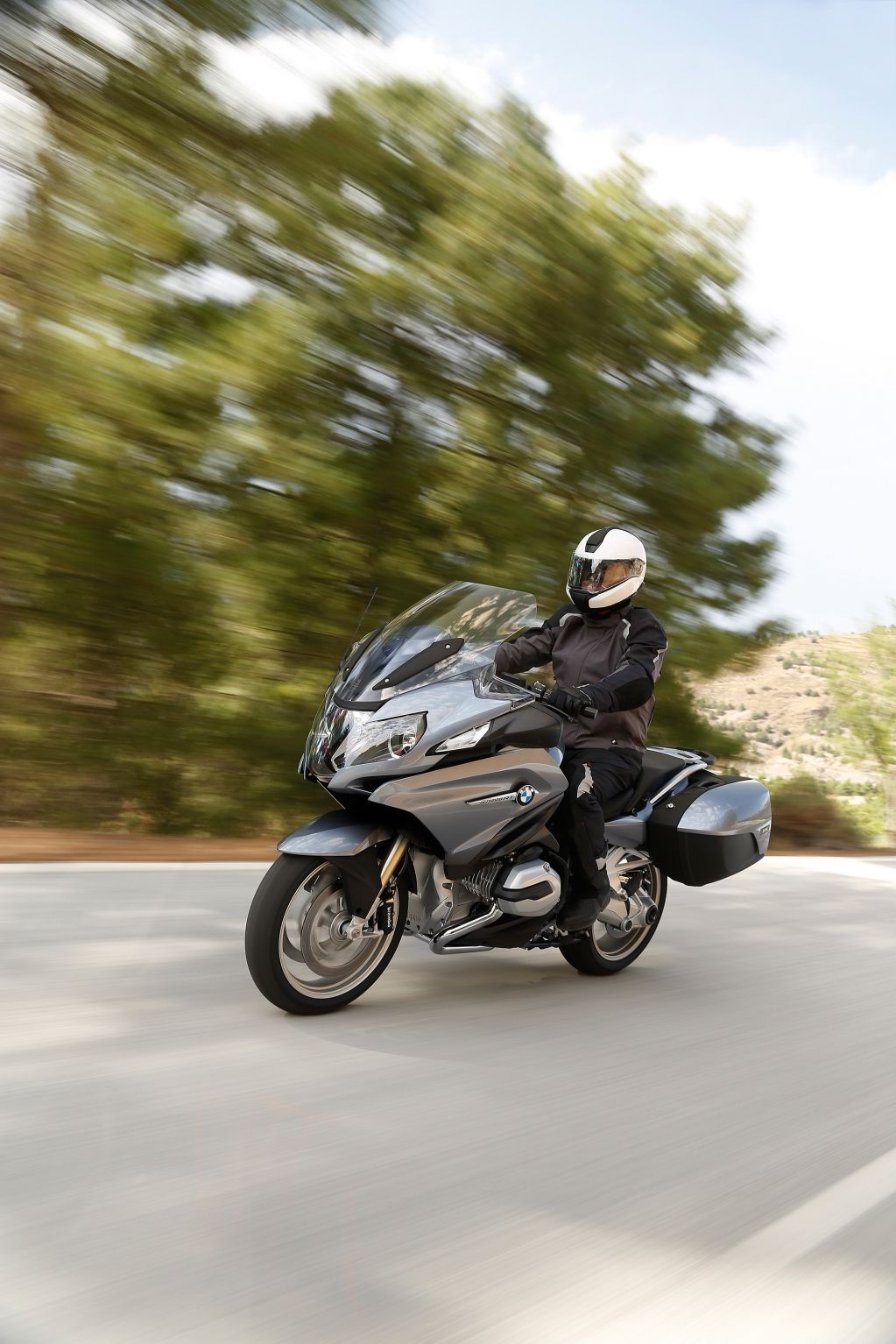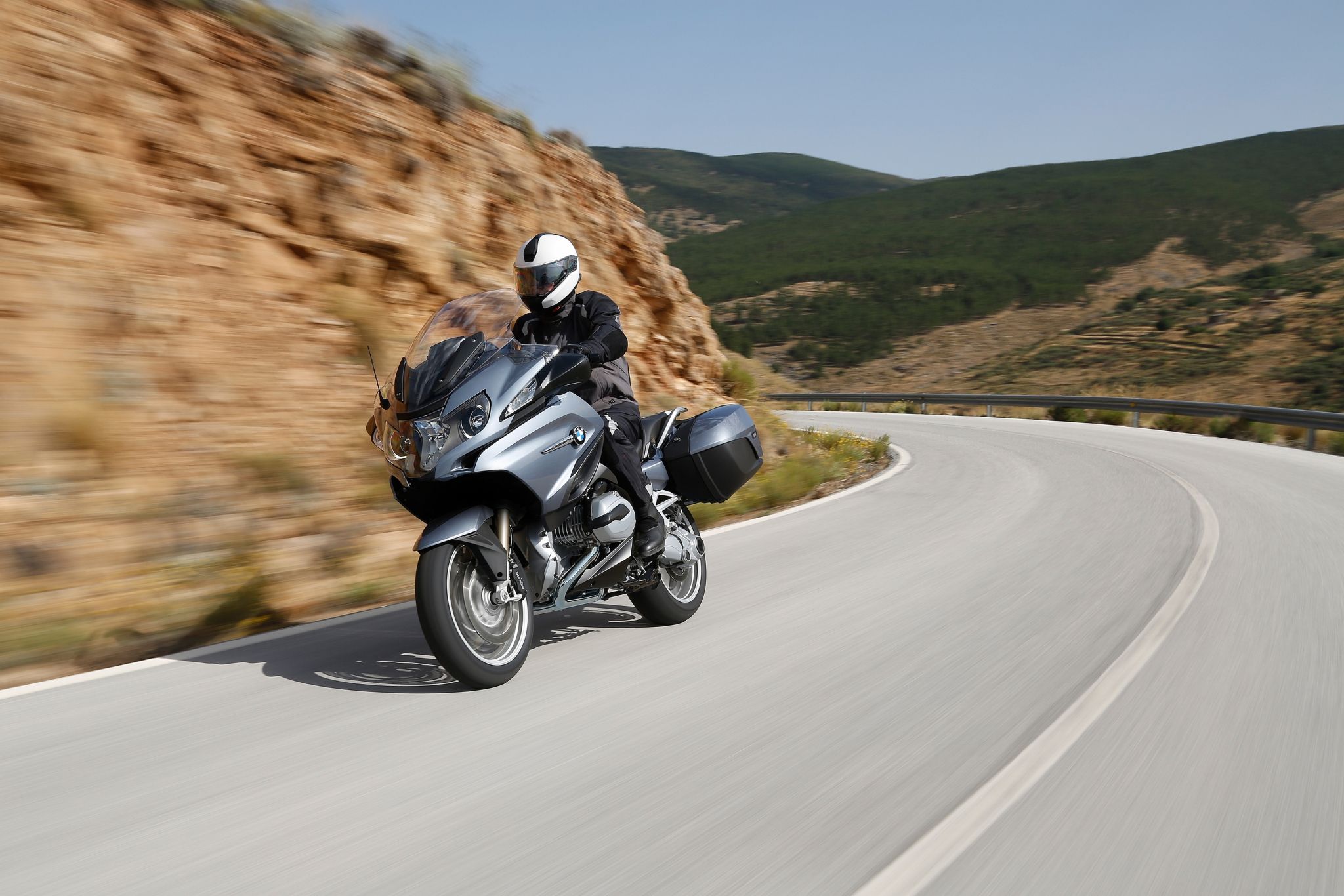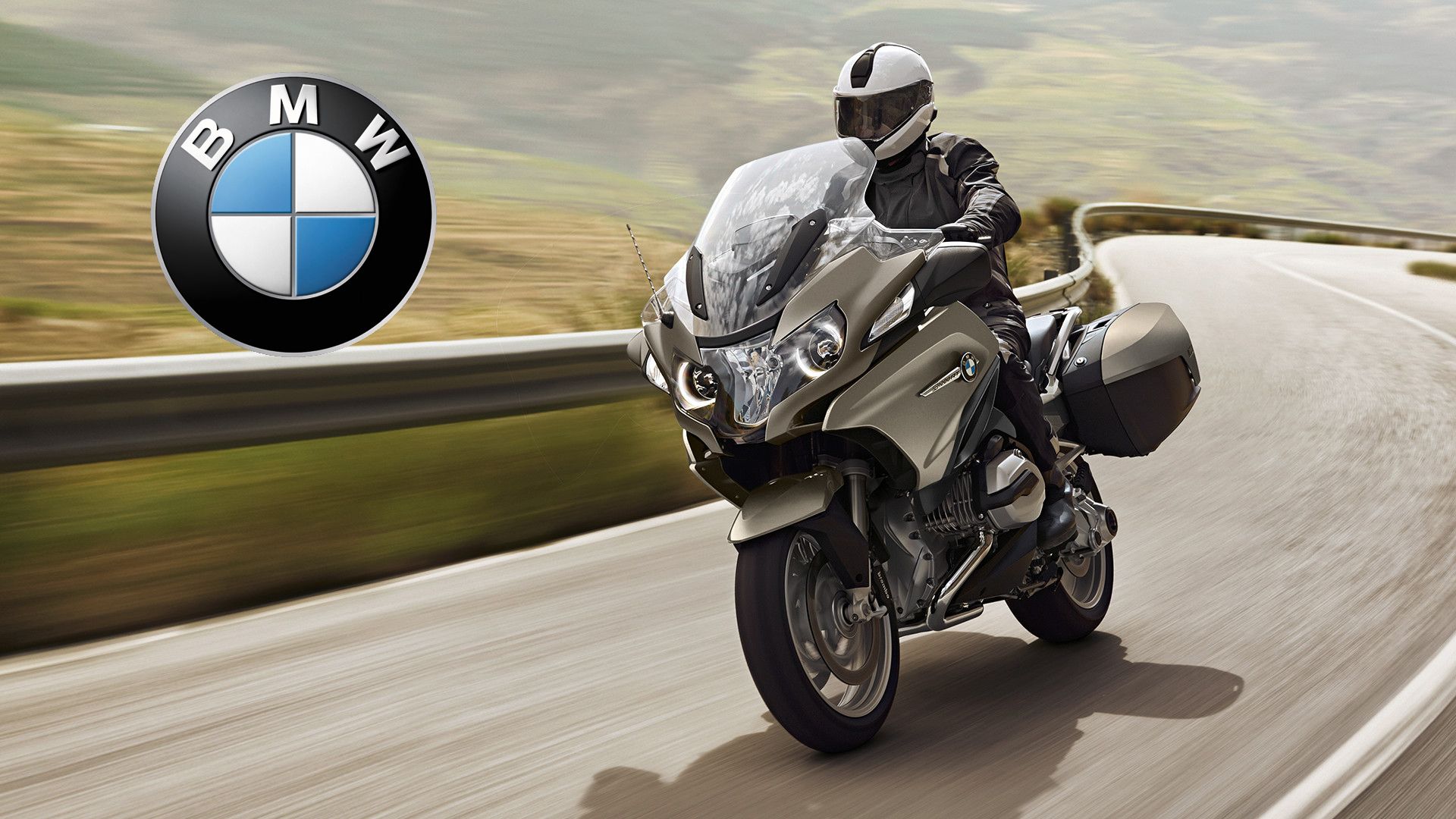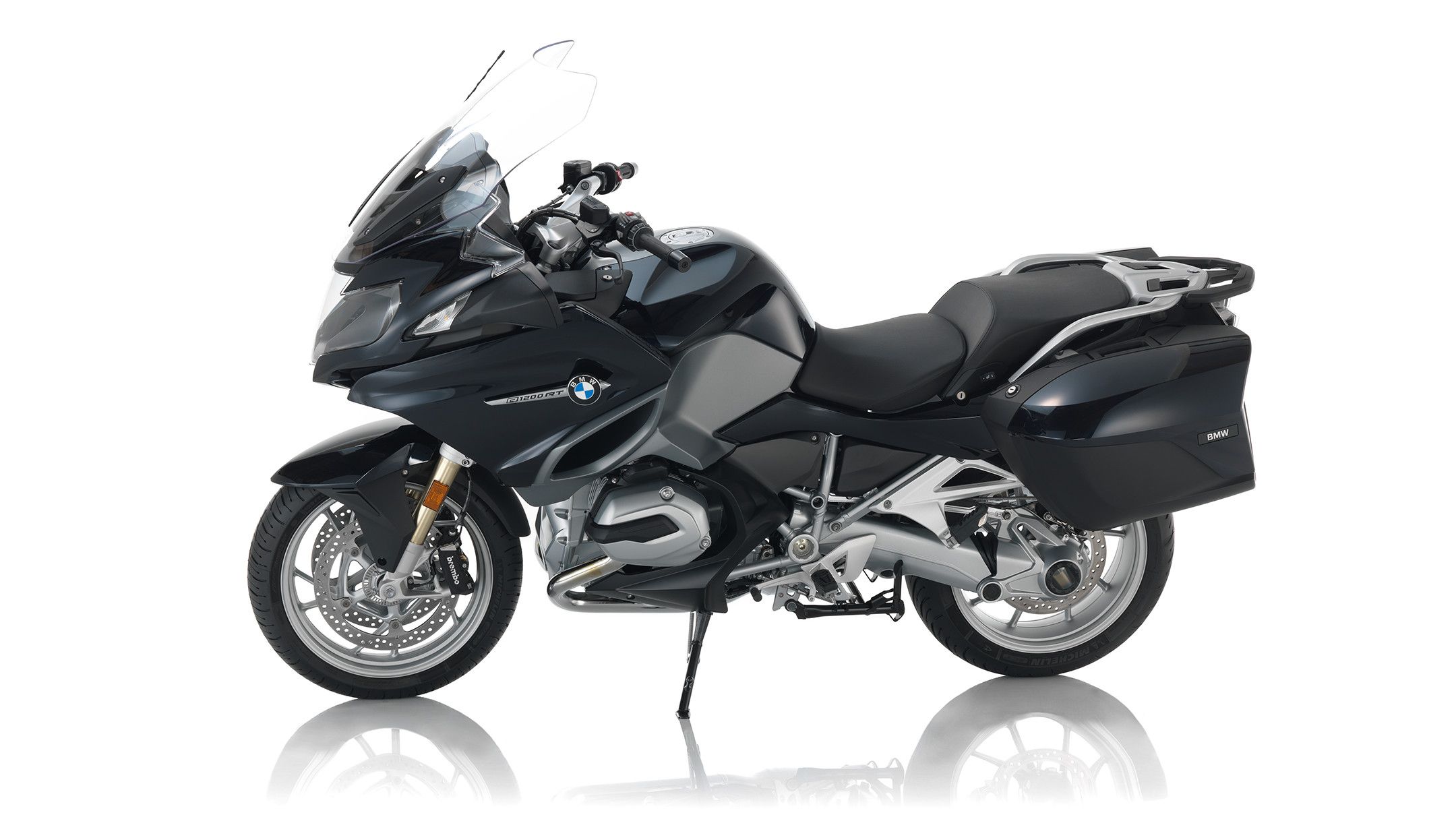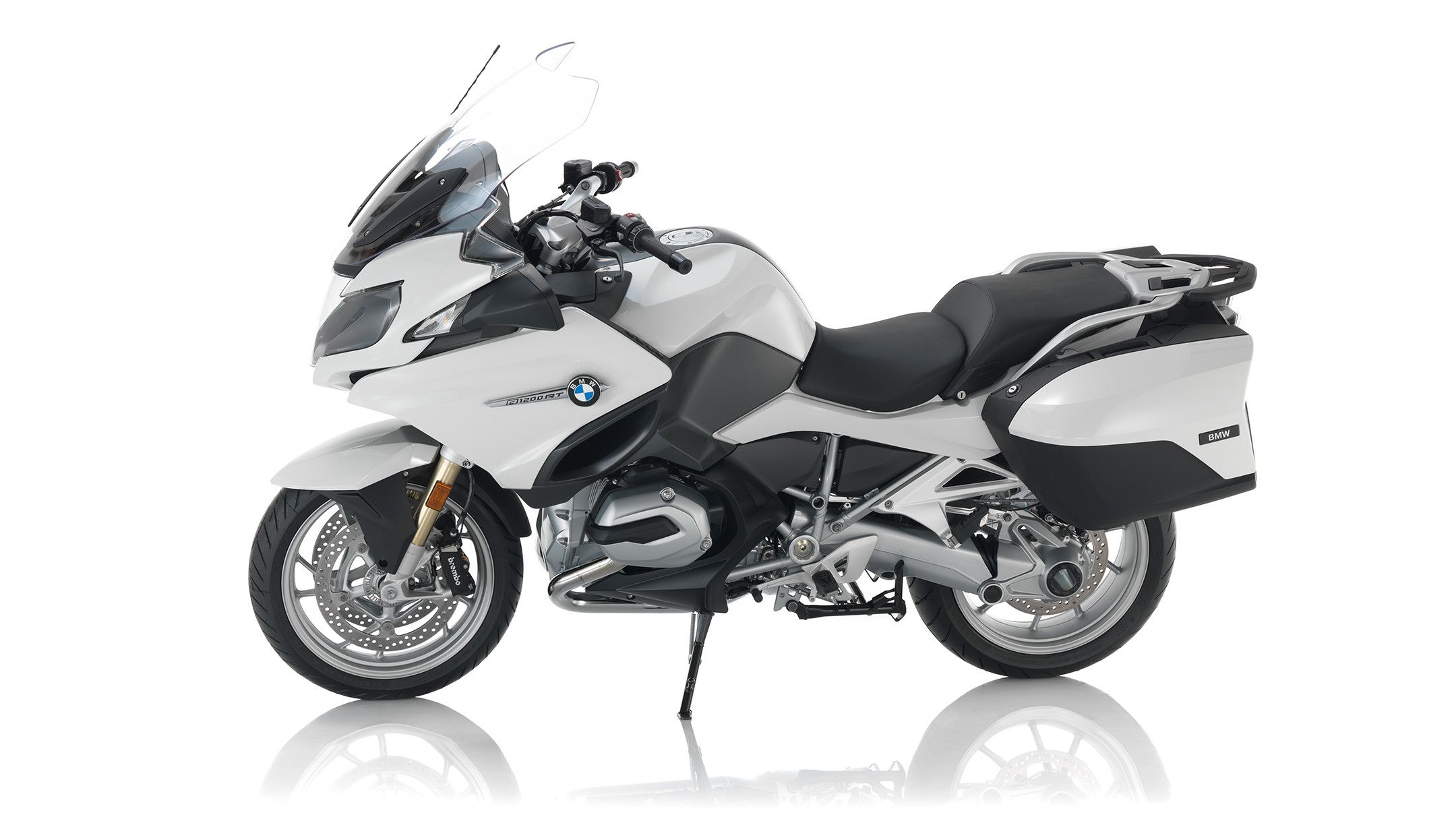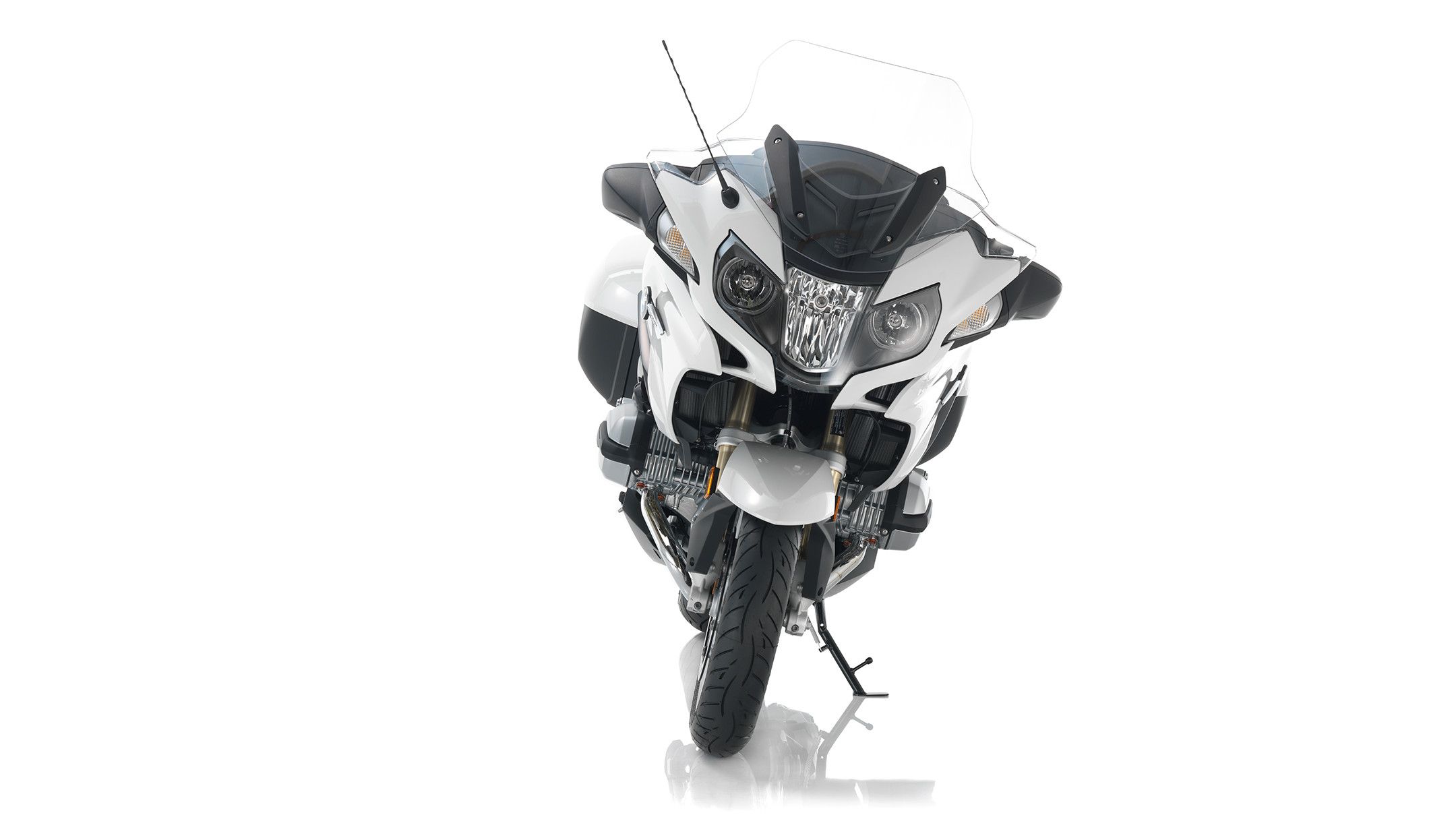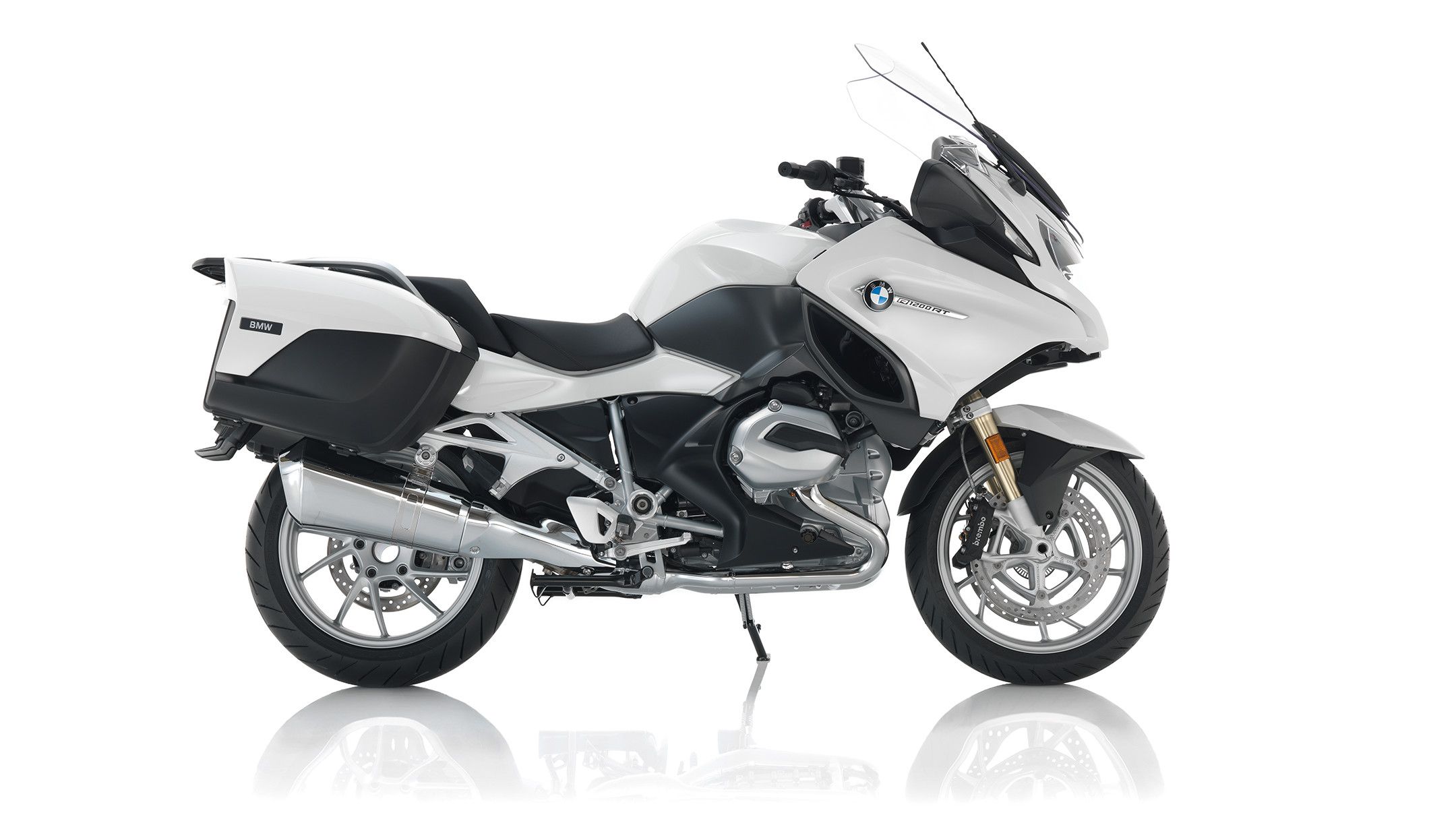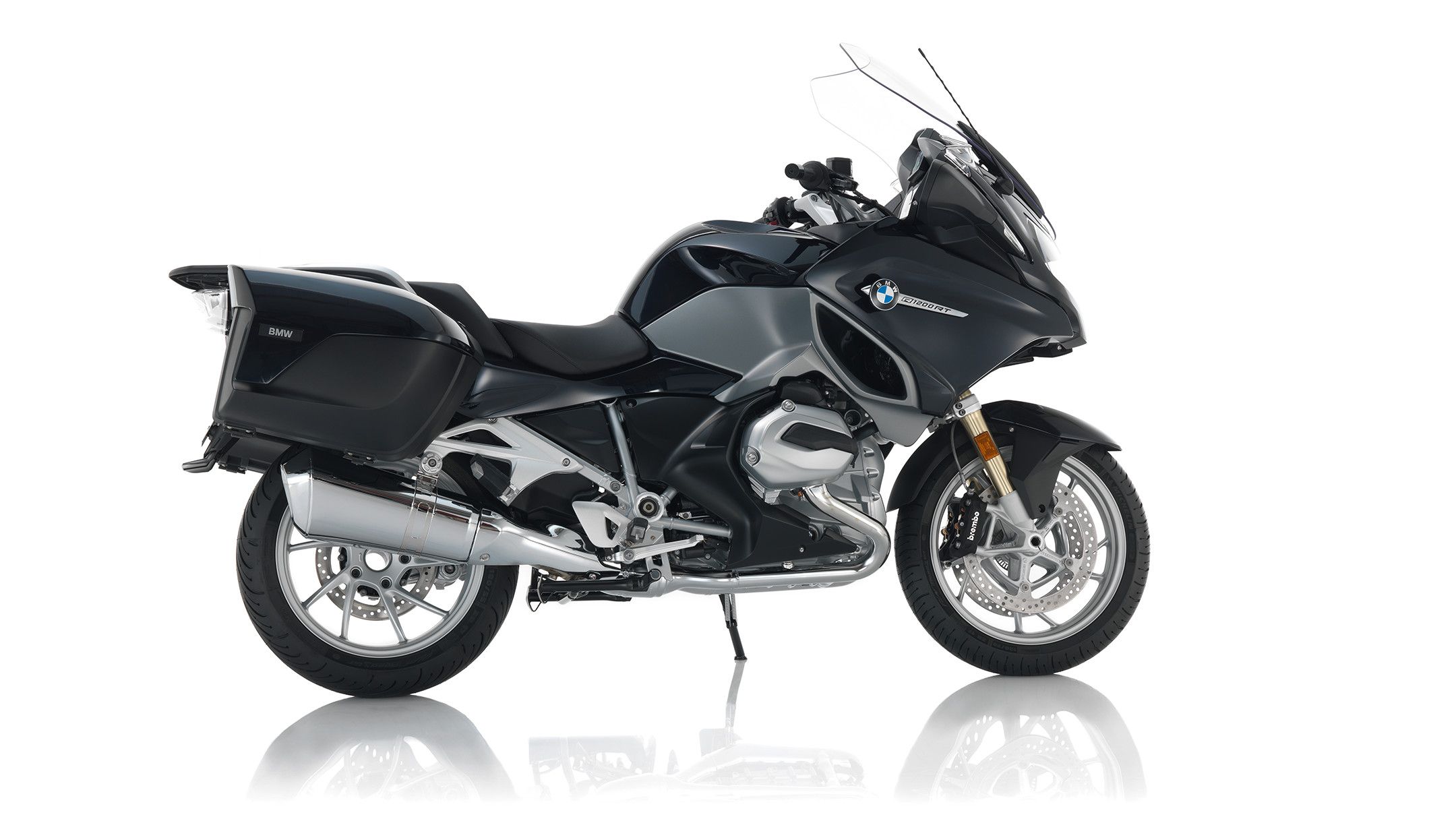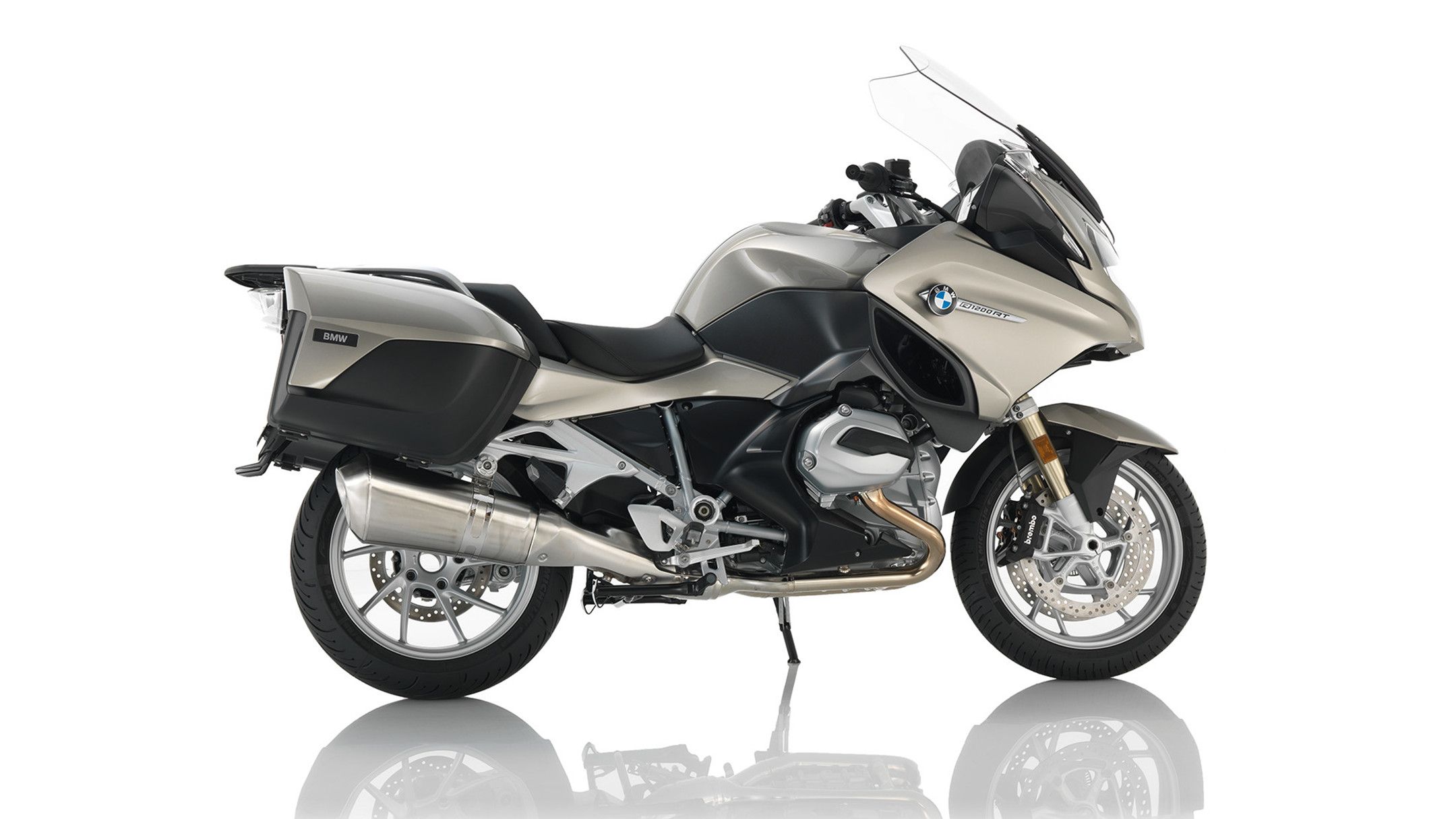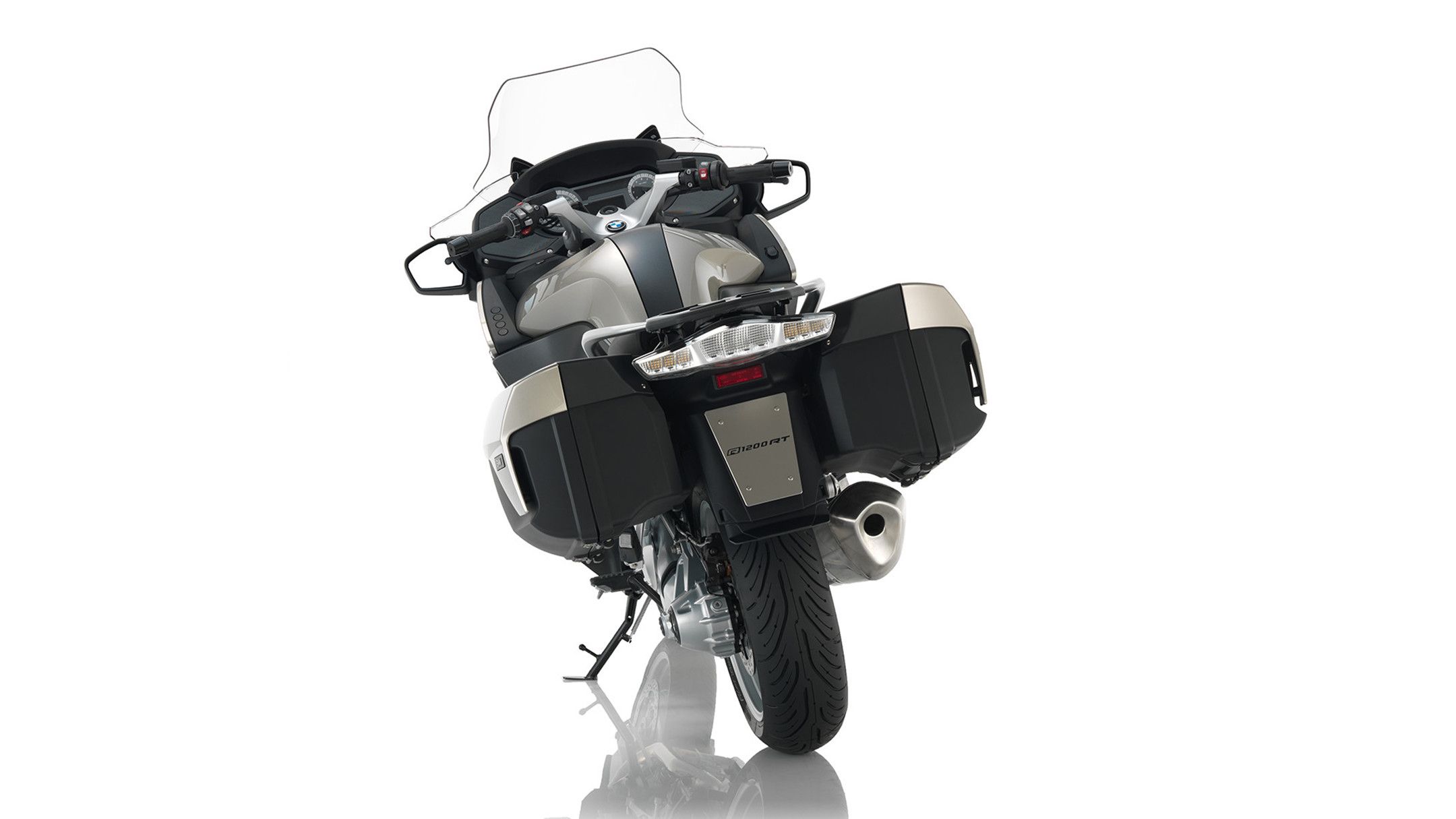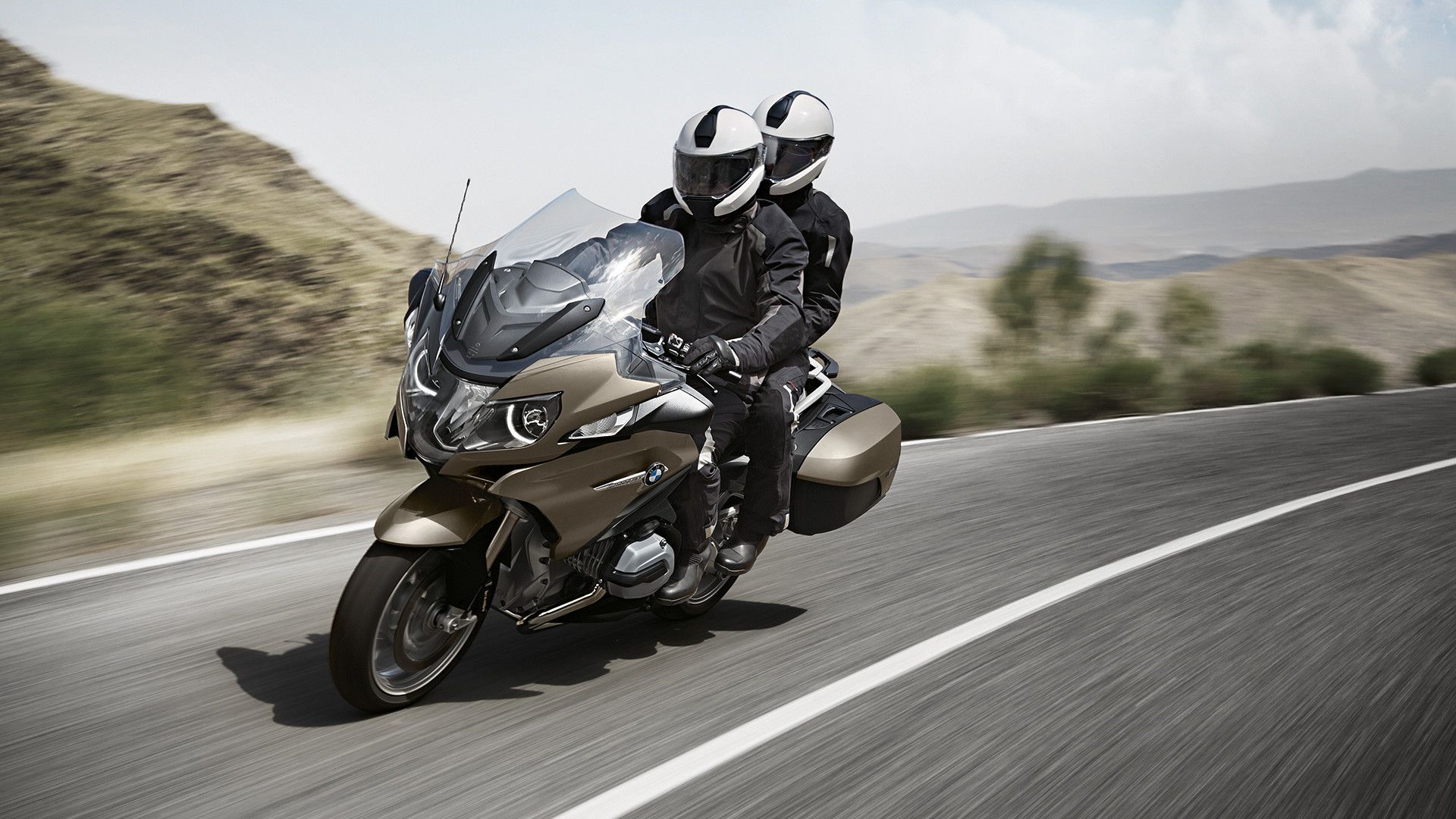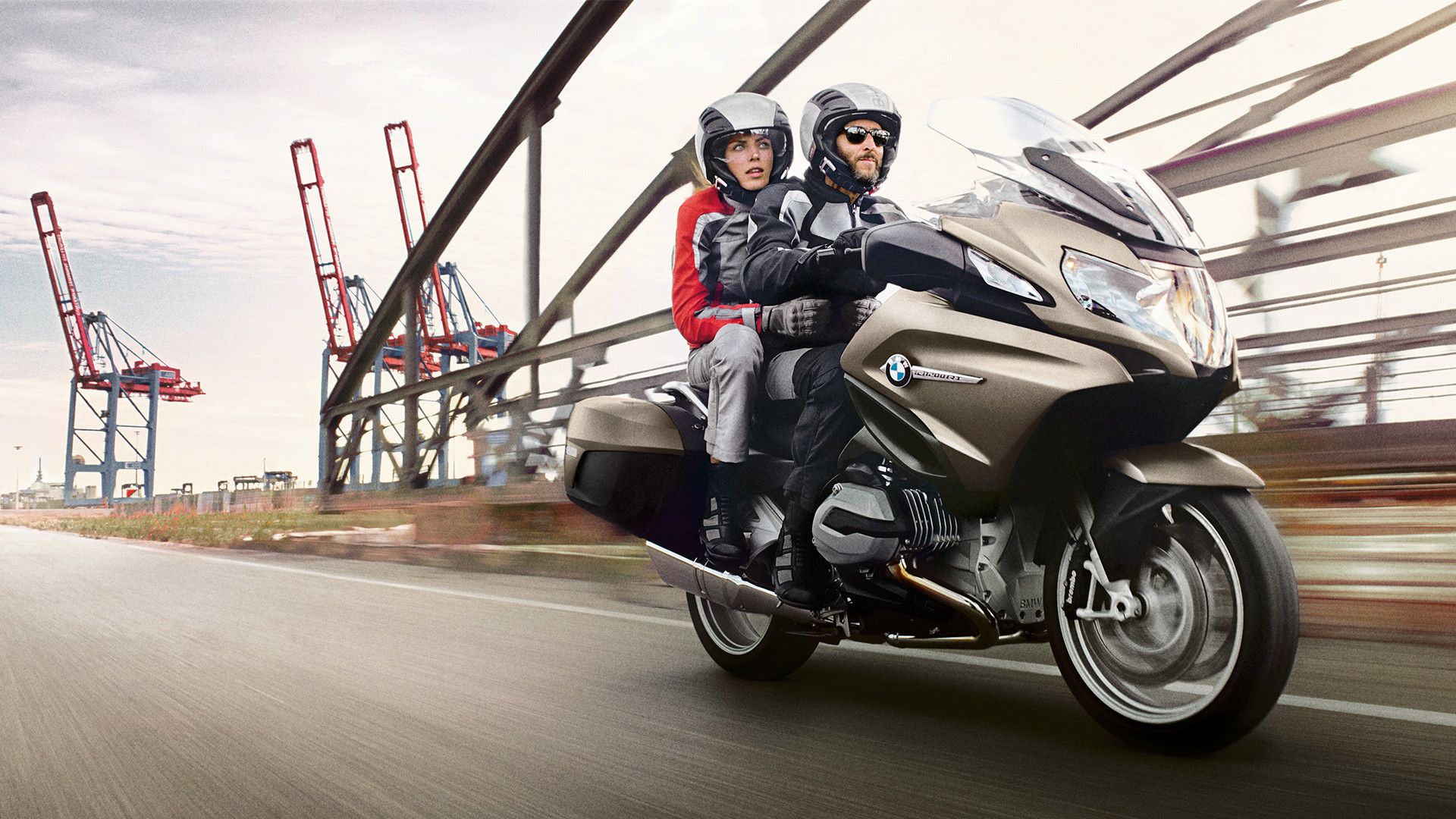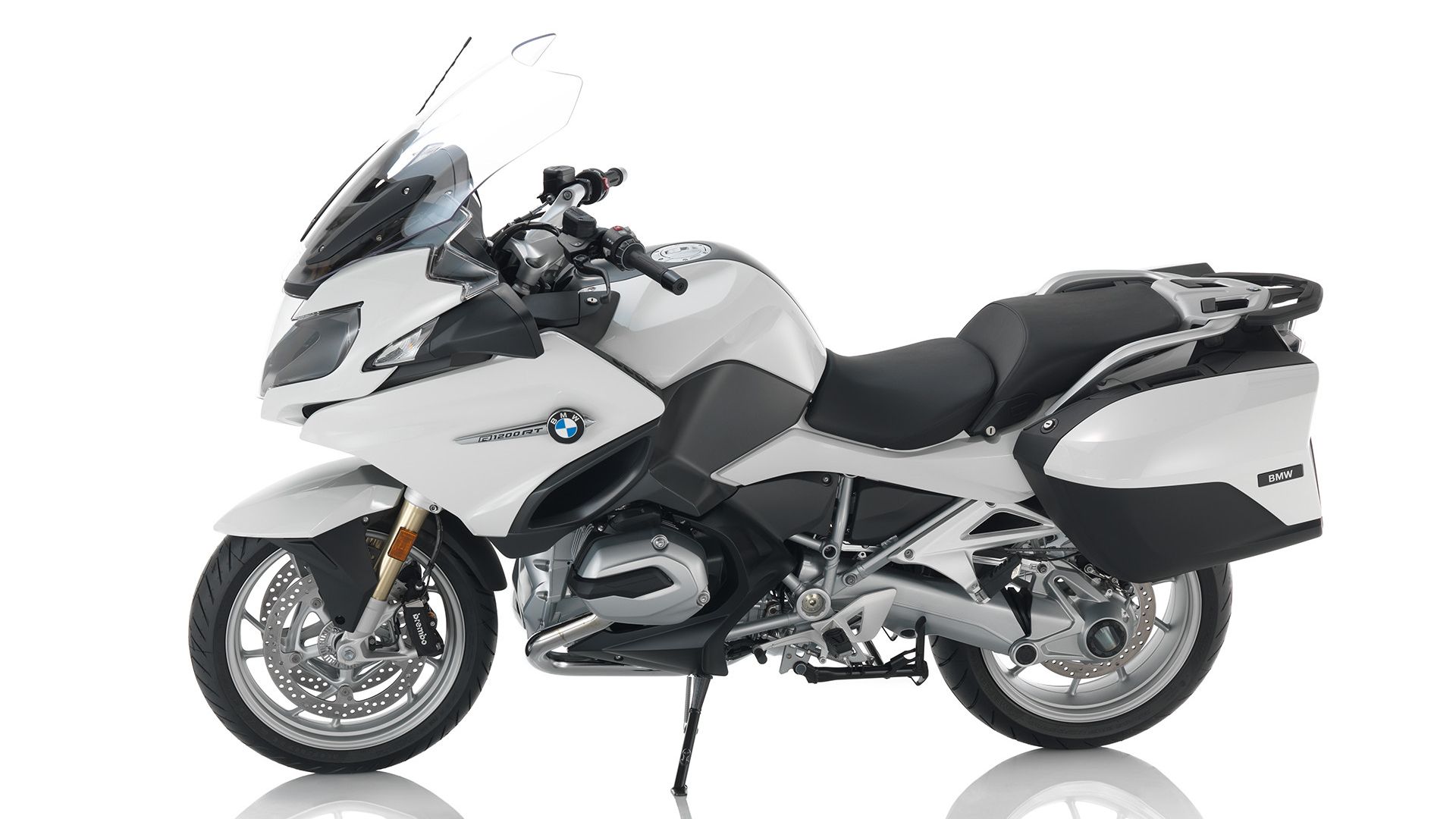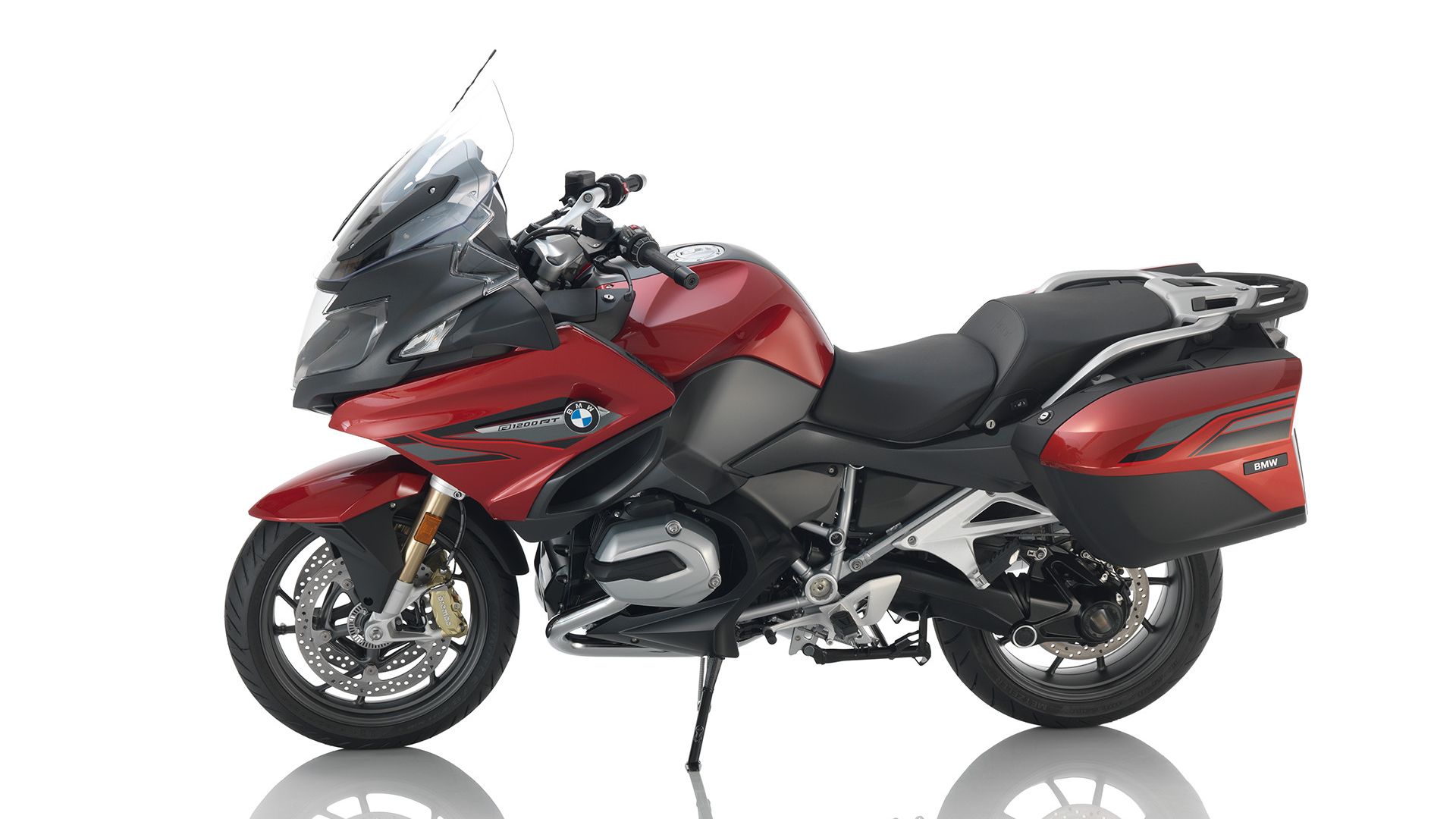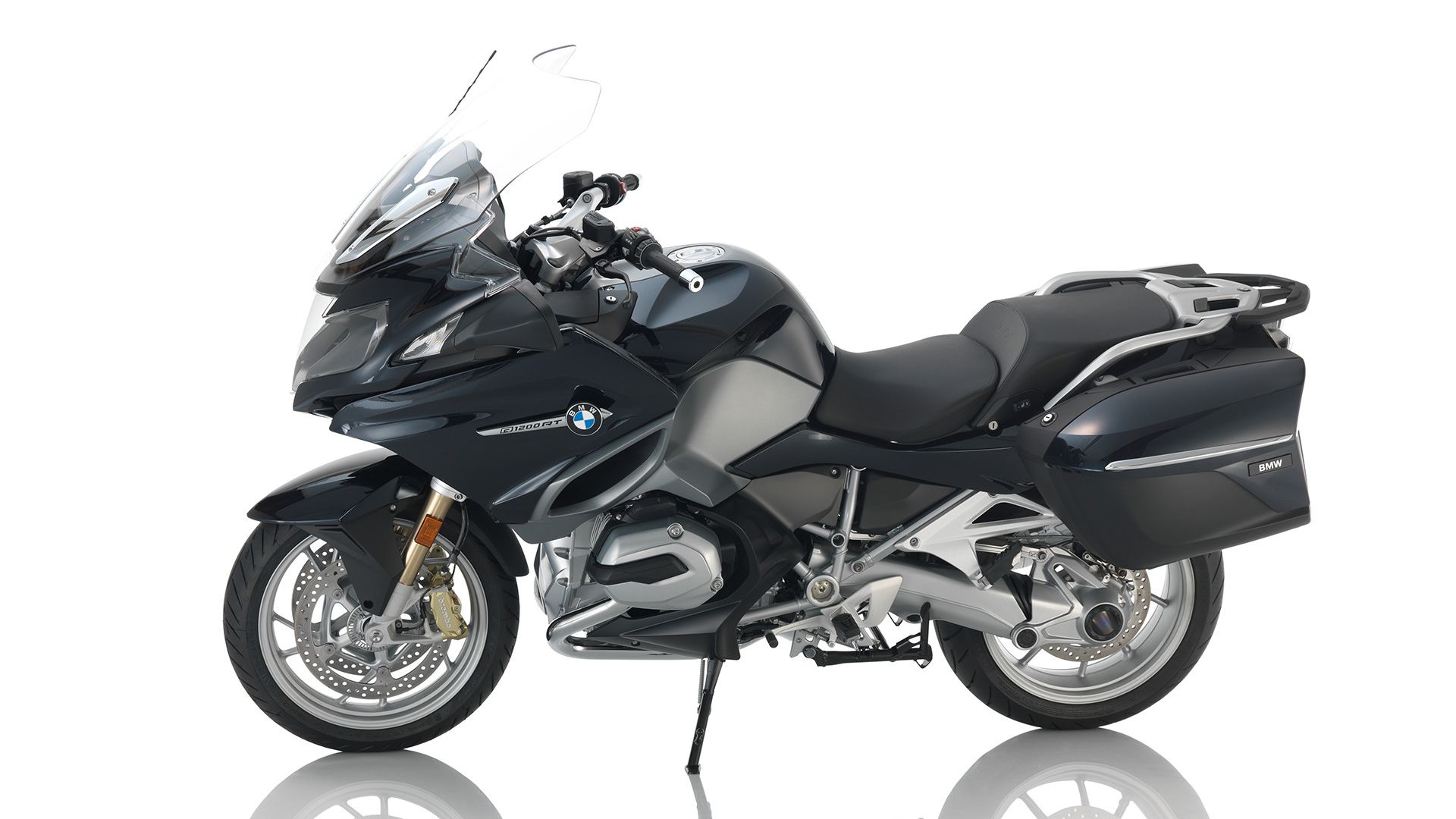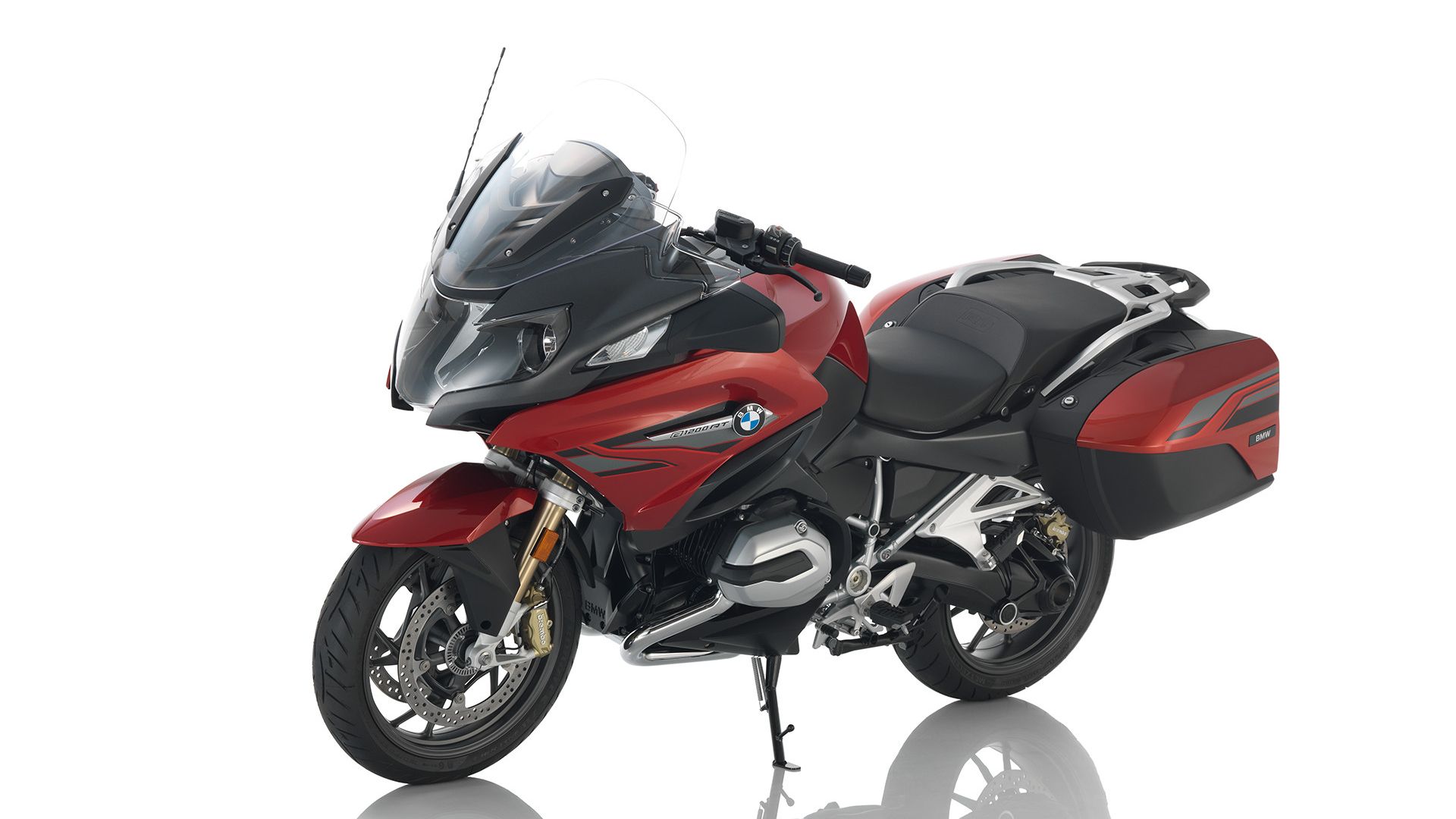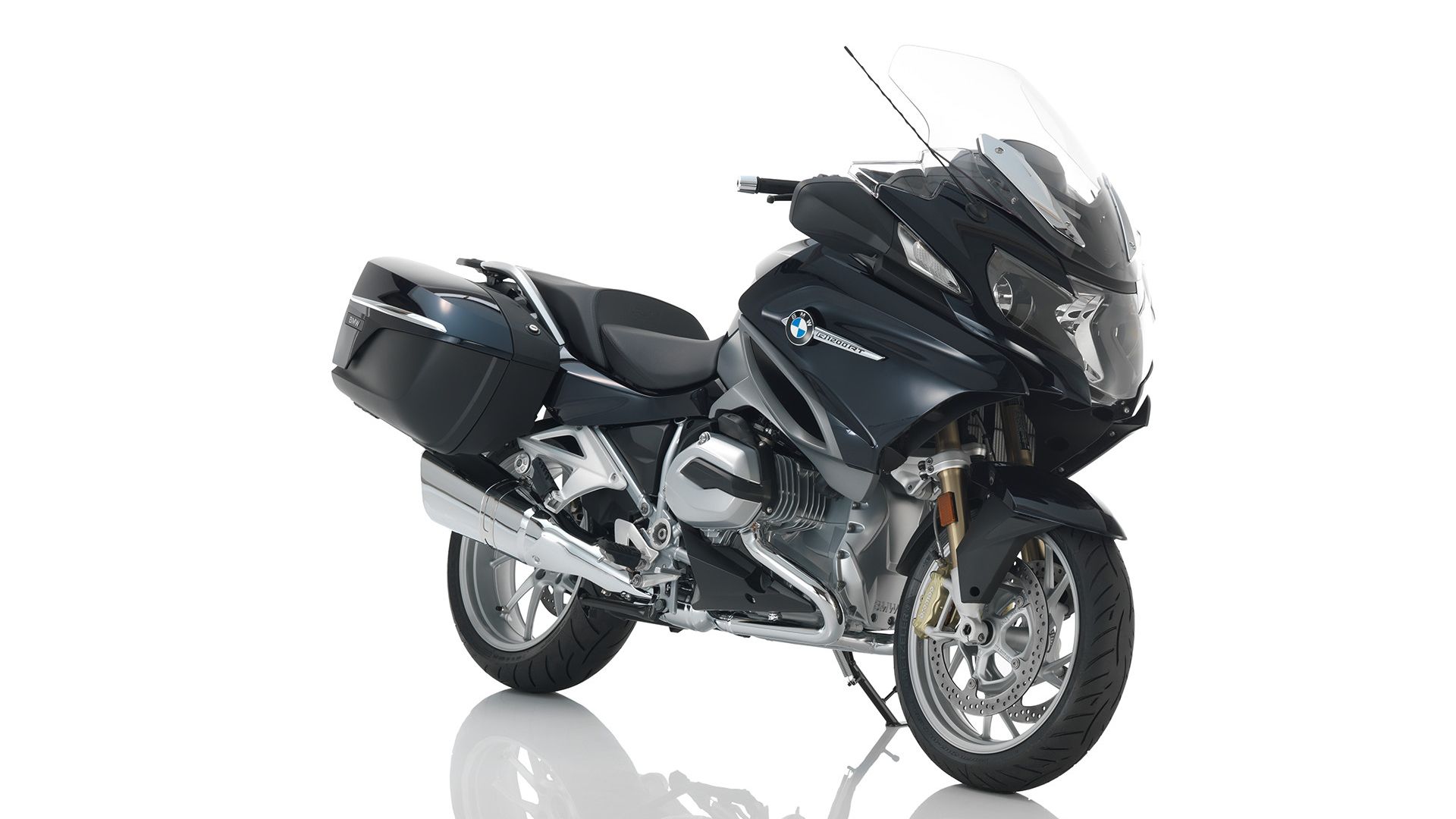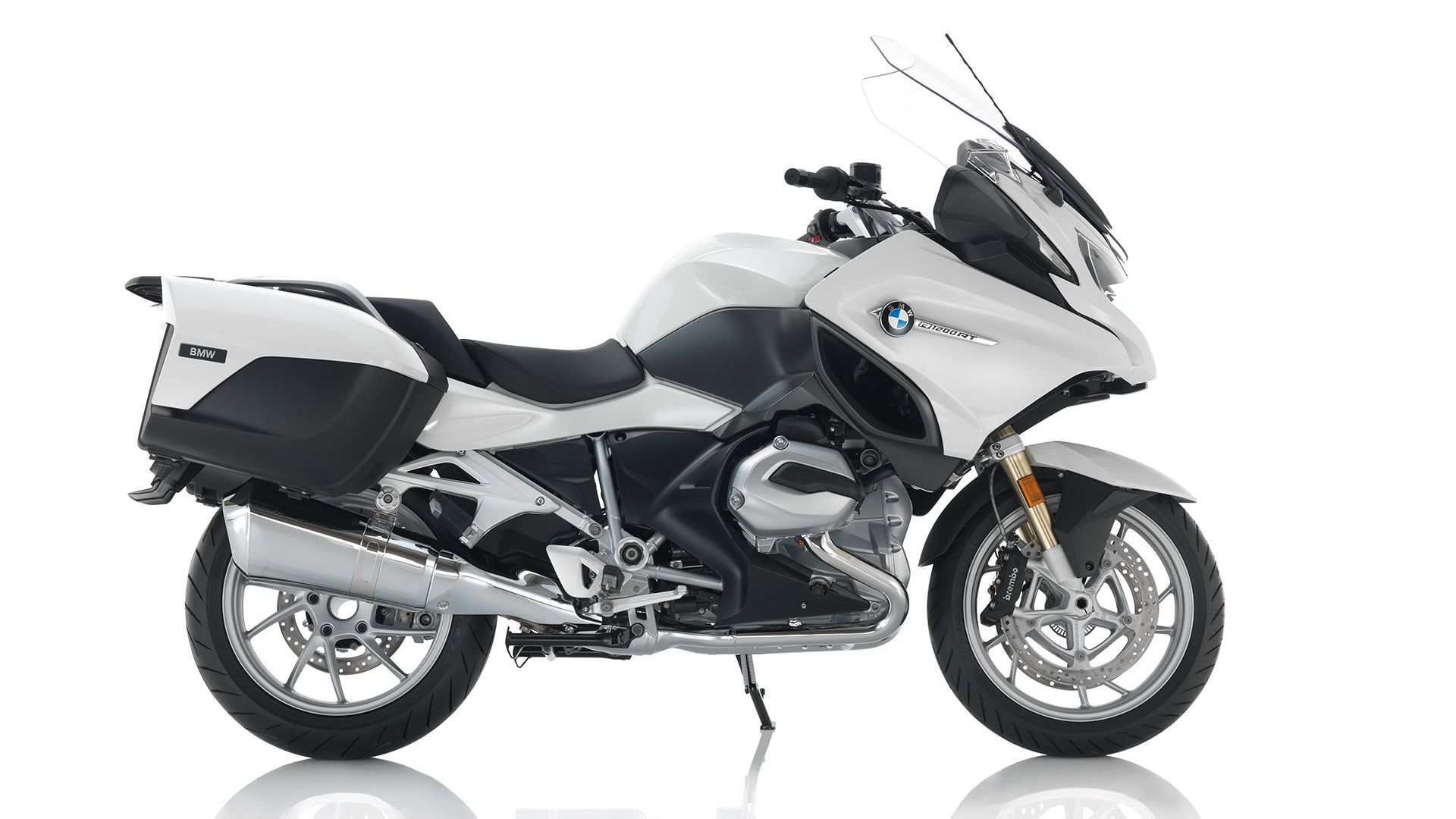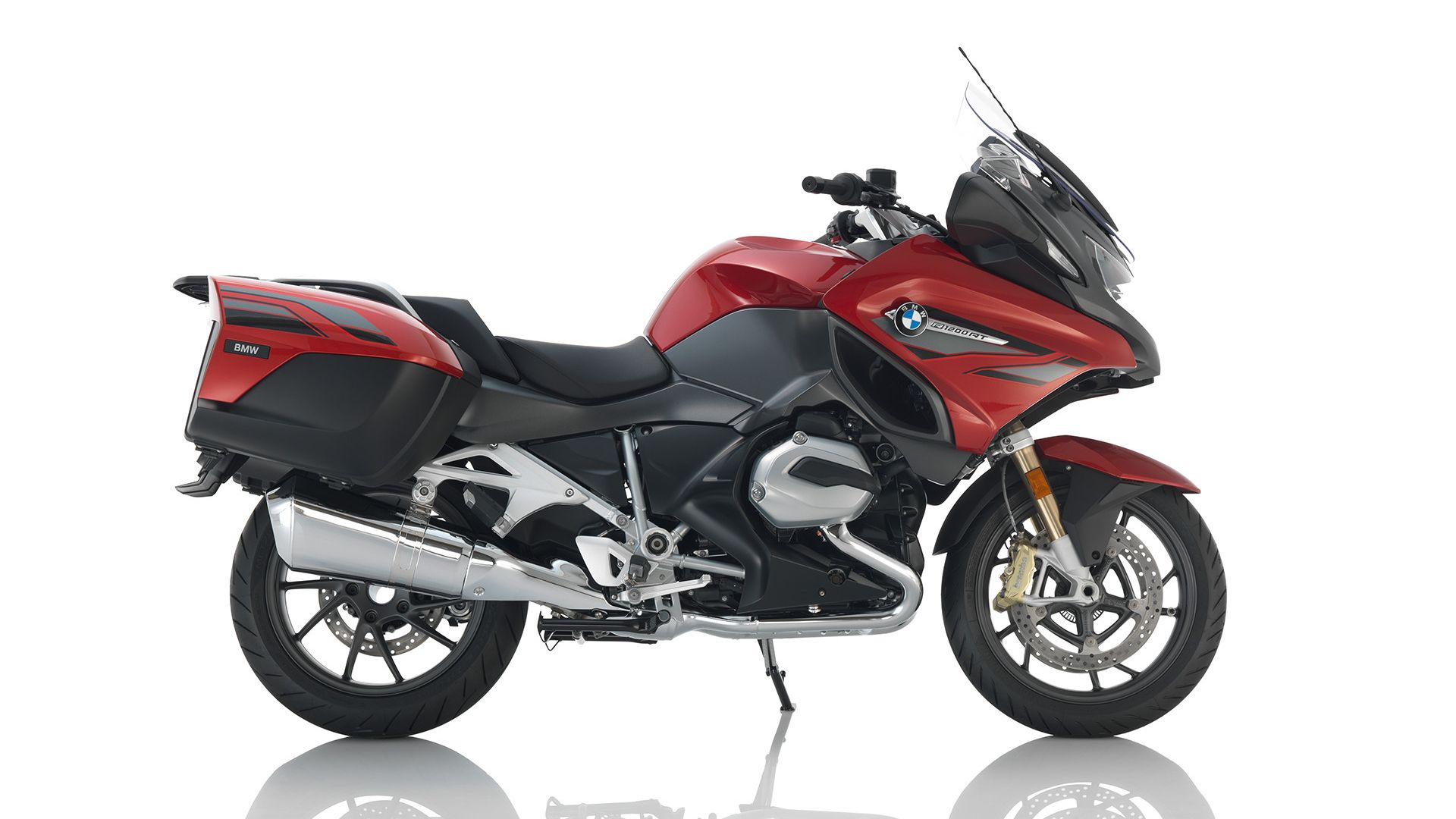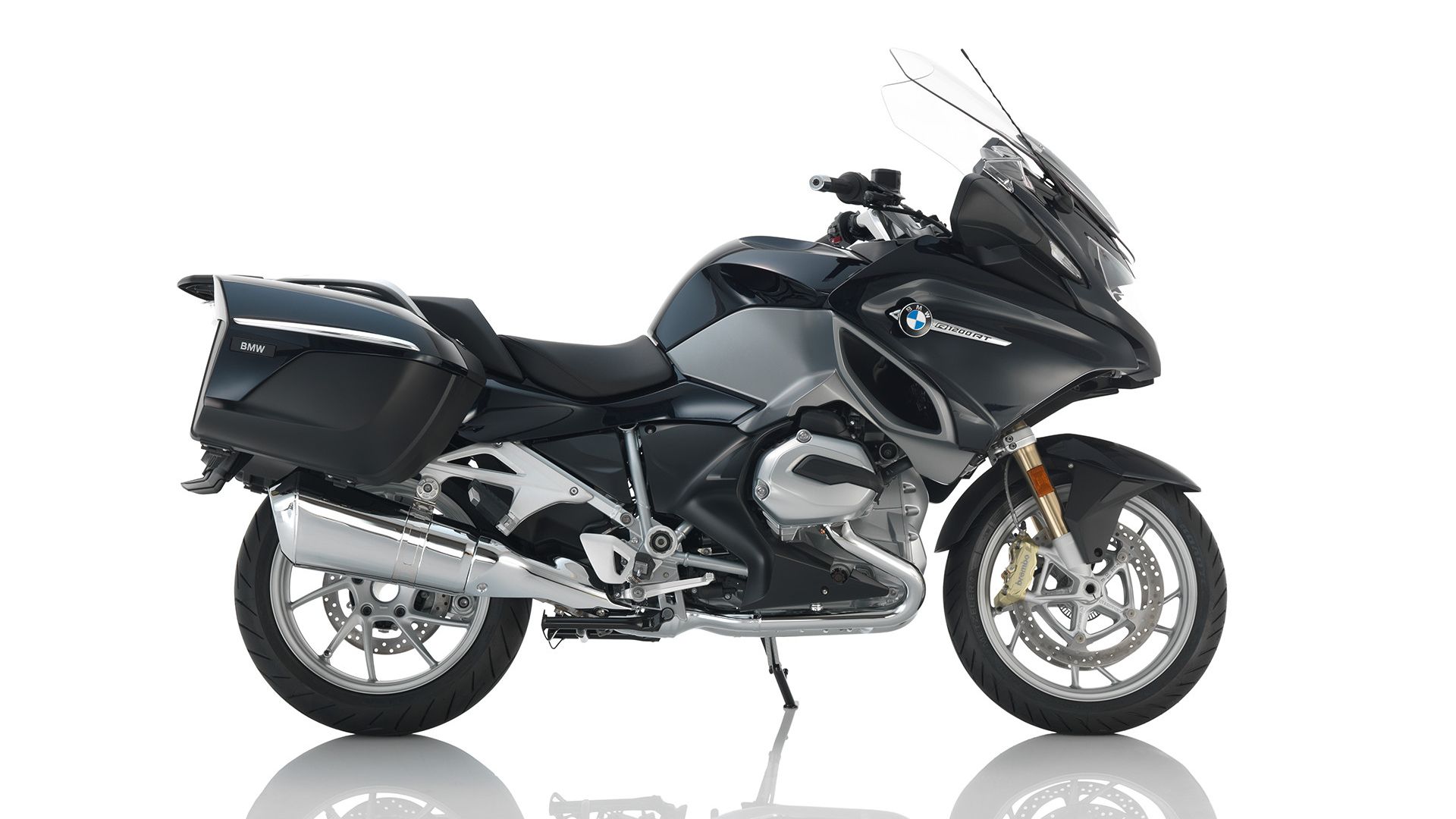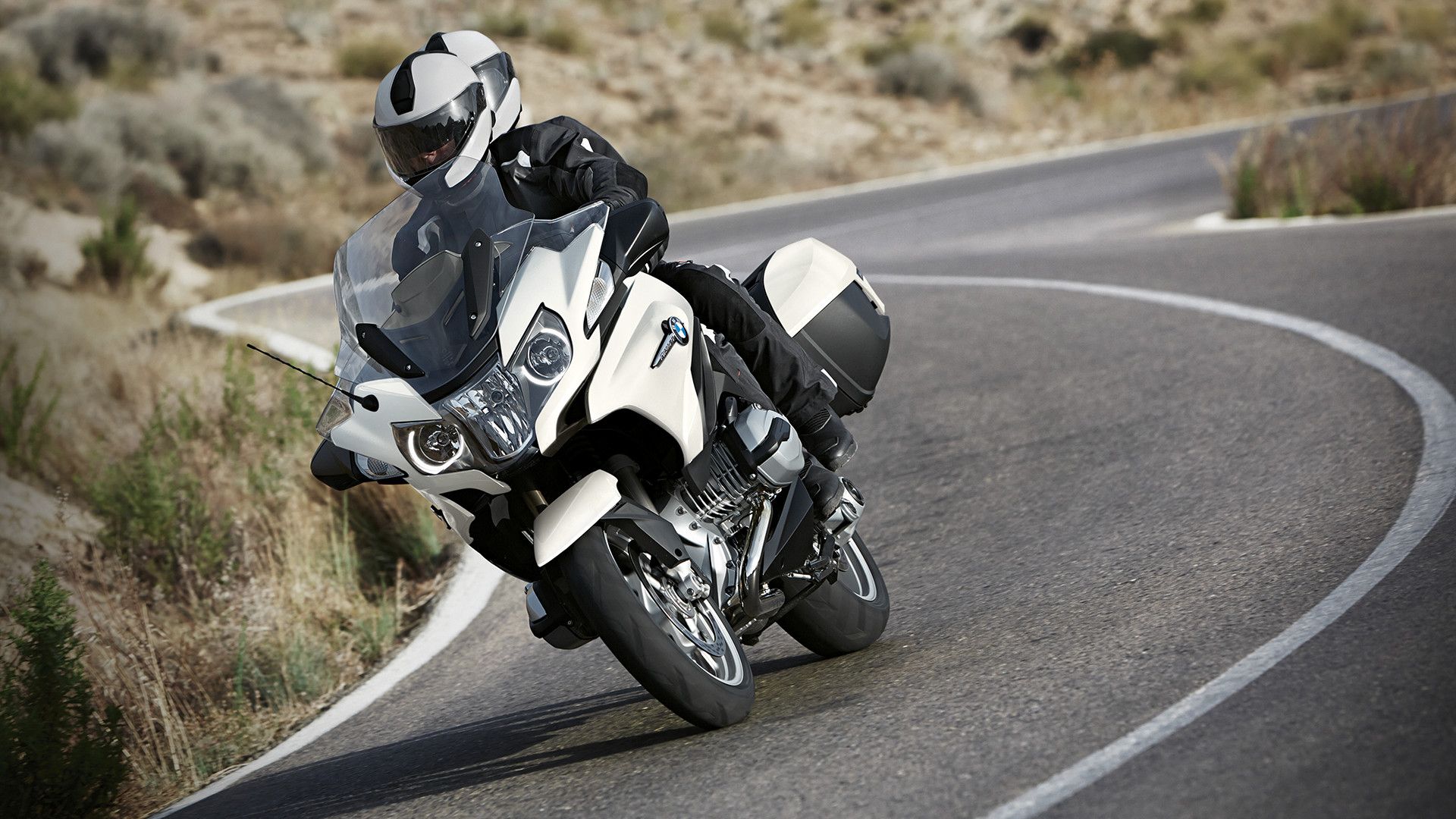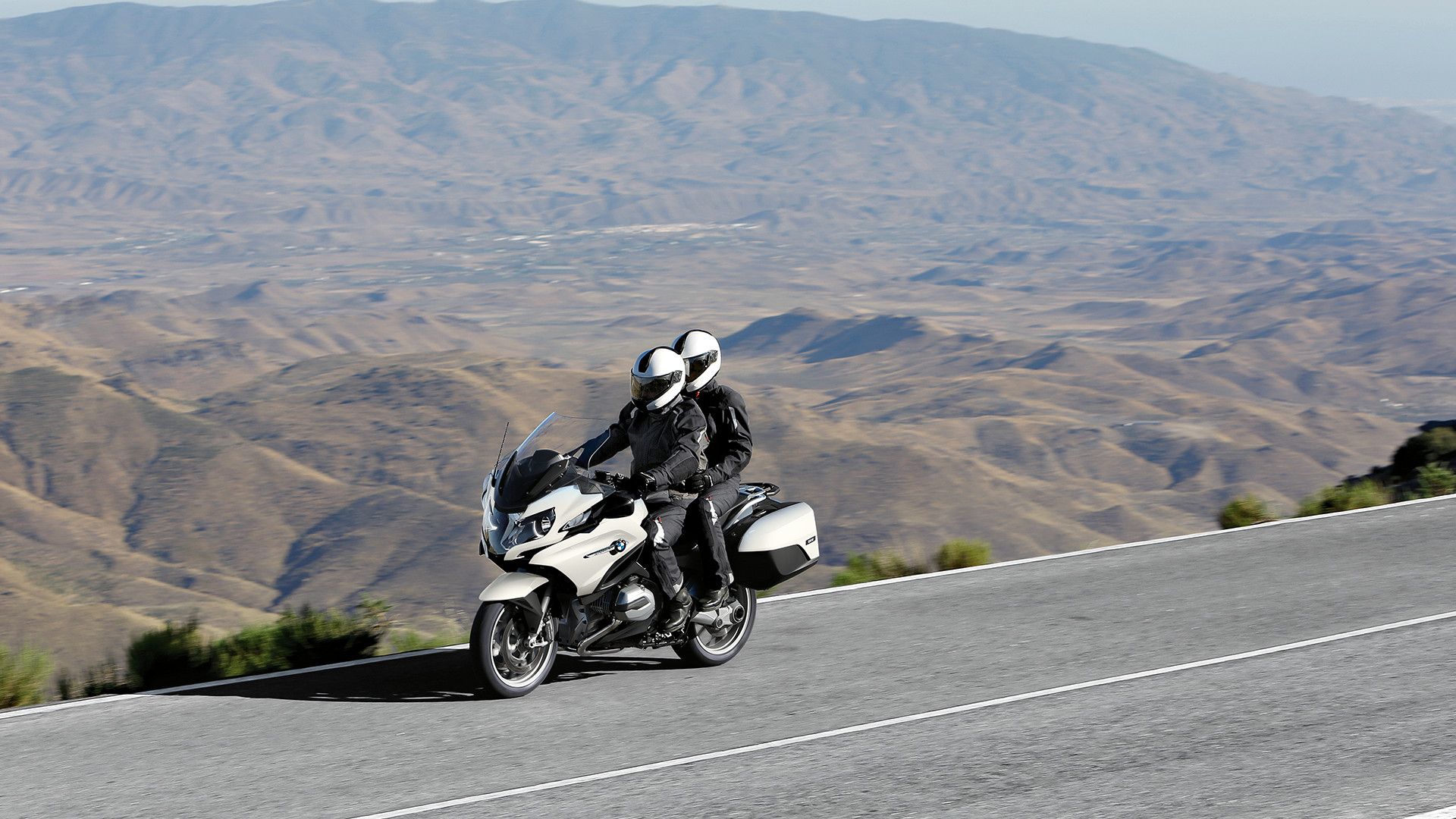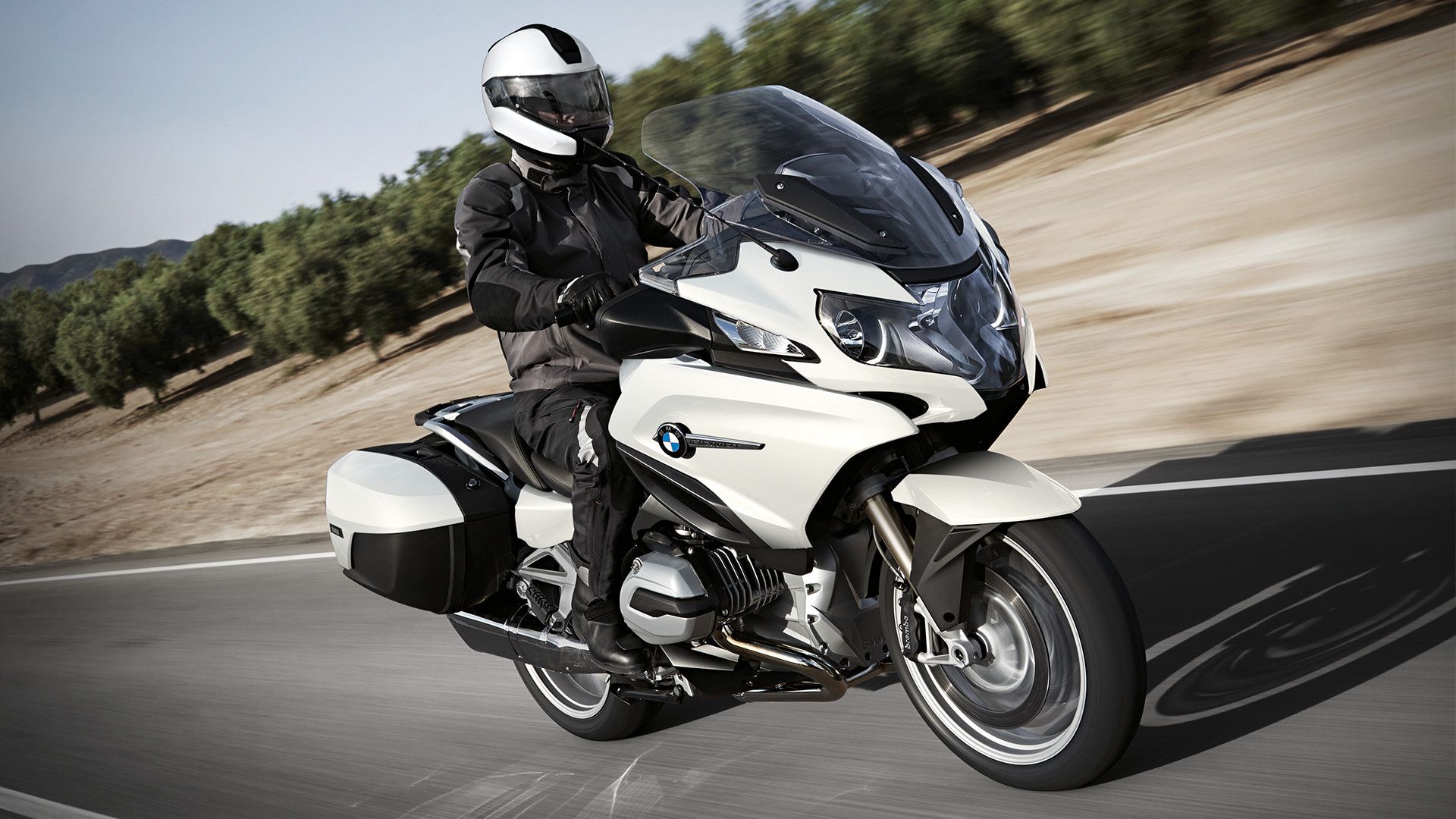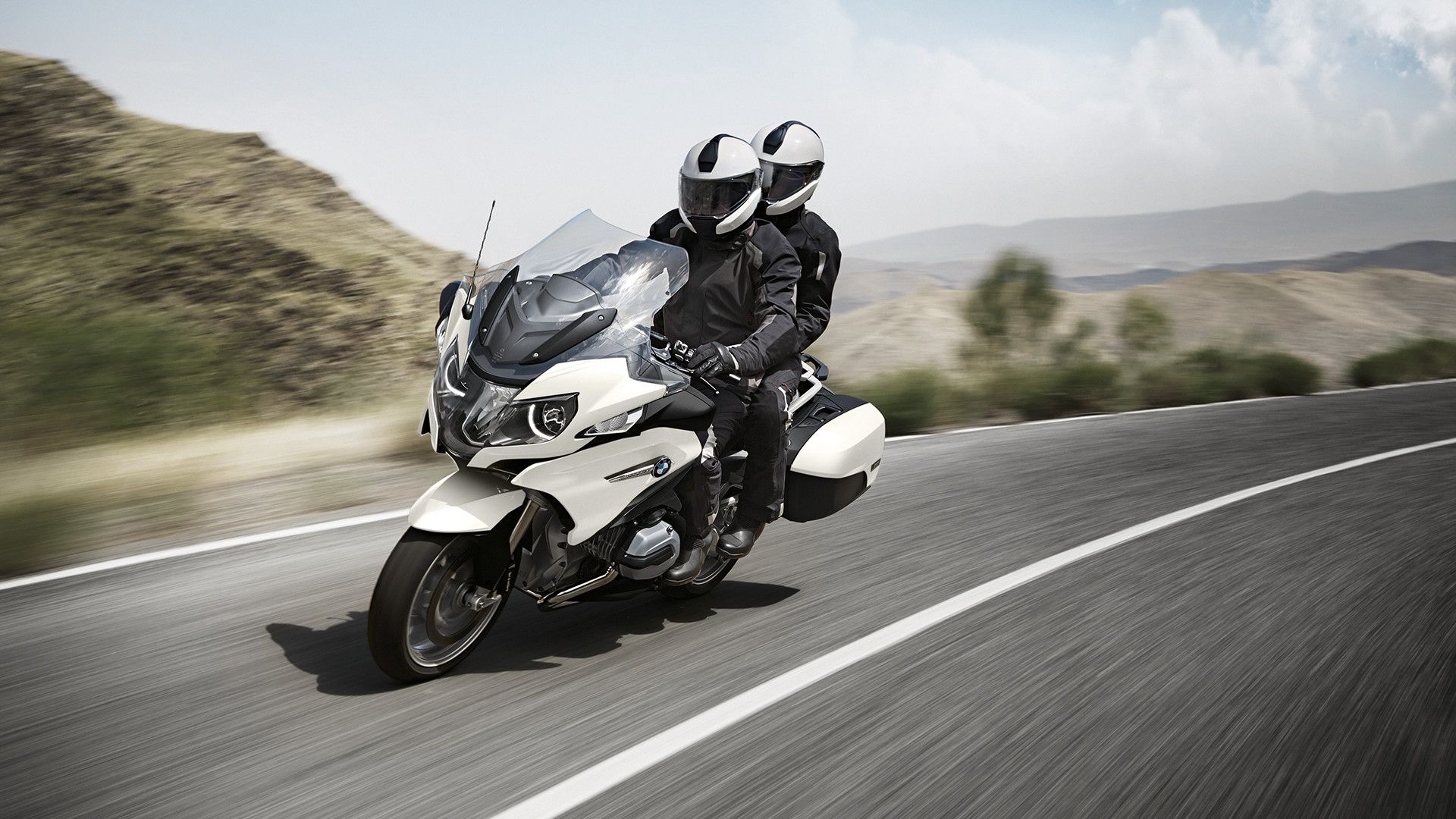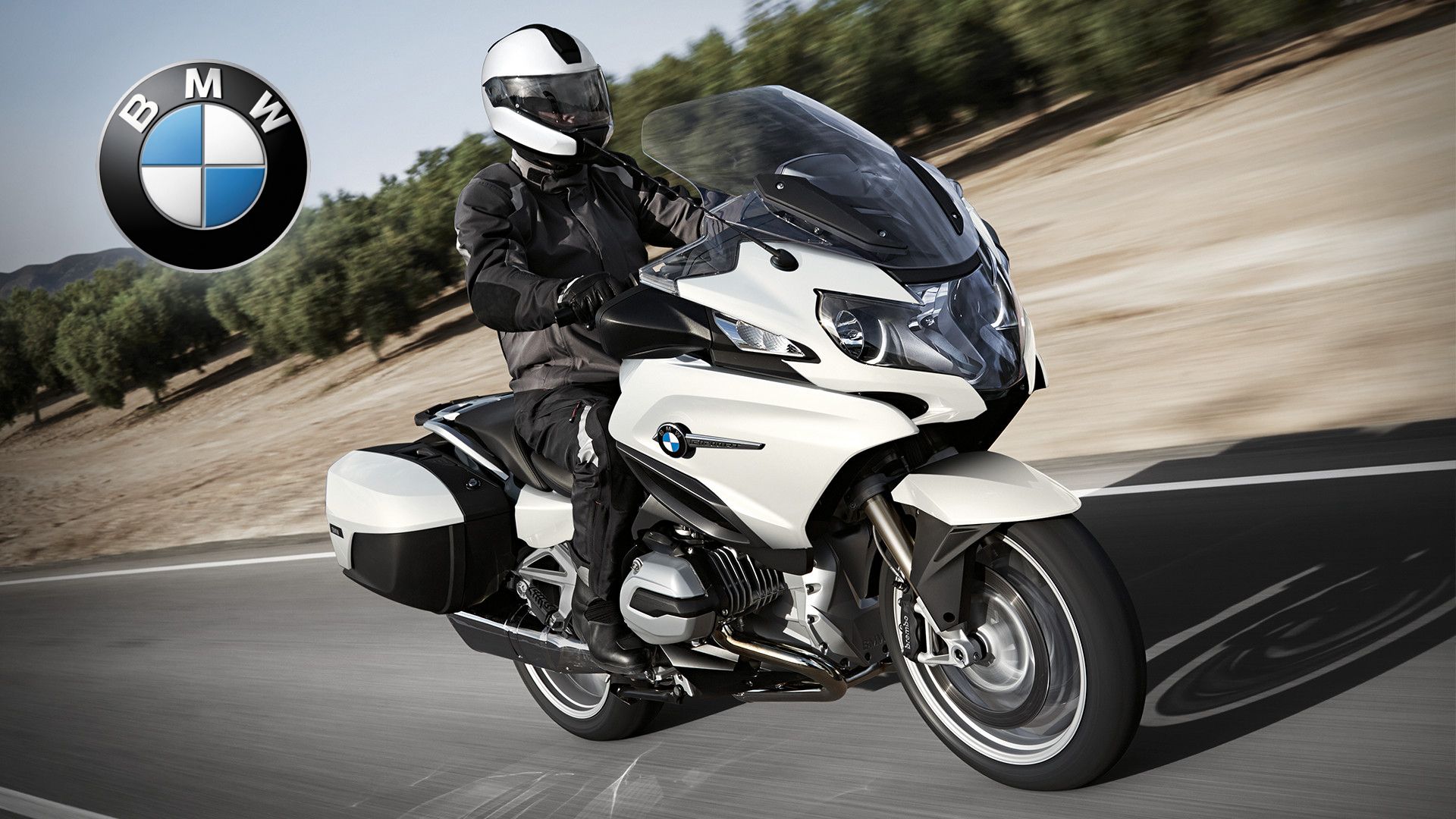The BMW marque has long been associated with top-shelf engineering and luxury, and that reputation is justified once again with the updated-in-2014 R 1200 RT. A true sport-tourer, the RT brings 125 horsepower to the table along with an array of electronic gadets to help manage the power and provide a low-stress riding experience. As a base model, the RT stands head and shoulders above most of the competition, but the available accessories raise the bar even higher. Excited yet? I know I am. This newest iteration also received a facelift that brings the model aesthetics up to date, so even though form follows function (as it should), form was definitely not neglected. Let's get to it and see what those crazy Bavarians are up to, and what they've done to bring the venerable RT up to date.
Continue reading for my review of the BMW R 1200 RT.
2014 - 2018 BMW R 1200 RT
- Make: Array
- Model: 2014 - 2018 BMW R 1200 RT
- Engine/Motor: Air/liquid-cooled 4-stroke flat twin
- [do not use] Vehicle Model: Array
Design
Beemer really puts the “sport” in sport-touring. Strip away the rider protection up front and the hard-side panniers and you're left with a “standard” streetbike. Pullback bars push the rider into an upright riding position and the low footpegs leave your legs in an un-cramped position, just what you need for long-distance stamina.
The bags really put the “tour” in sport-tourer as well, and that's kind of a rarity for non-American tour bikes. Seriously, sometimes I wonder if the word “tour” means the same thing to the rest of the world, but Beemer got it right with some lockable dry cargo capacity and a generous luggage rack for less-than-dry storage.
A large front fairing punches a hole in the wind to protect the rider and a power-adjustable windshield allows you to dial in for preference and body type. The 6.6-gallon fuel hump dominates the flyline ahead of the deep-set saddle that puts the rider in the bike as opposed to perched on top, and that oneness helps to turn the RT into an extension of the rider's body. Stock seat height measures out between 31.7- and 32.5-inches high with accessory seats that extend the range from as low as 29.9-inches up to 33.5-inches off the ground.
Fit and finish is phenomenal, just as you'd expect, and the overall panache shows a synergy and maturity that simply cannot be faked. LED lighting increases safety all around that give it a distinctive look while increasing daytime safety and keeps the taillight/turn signals compact and unobtrusive. Security is convenient with a button-actuated locking mechanism that catches the panniers and fairing storage with one touch of the key fob or the switch on the right handlebar switch housing.
A pair of analog clocks report speed and rpm with a 5.7-inch TFT display that delivers the other critical metrics. Unlike many current top-shelf tourbikes, the RT's audio system is an option, and this is definitely a spot where there is room for improvement as many manufacturers, such as Harley-Davidson, Indian, and Kawasaki to mention a few big names in the touring market, chuck the tunes on as part of the standard equipment package.
Chassis
The barely-visible bones use the engine as a stressed member to eliminate a chunk of the frame to help keep weight down at 604-pounds wet. Steering geometry strikes a balance between stability and agility with a 26.4 rake angle and 4.6 inches of trail. The steering sweeps through a 72-degree range of motion as well, and this will help you negotiate tight parking lots with relative ease.
A cast-aluminum, single-side swingarm contains the driveshaft with a WAD strut to tame the motion. While the rear-end suspension sports handwheels to adjust the spring preload and rebound damping, the stock front suspension is pure-D vanilla, at least on the standard version. One of the available upgrades brings Beemer's active suspension into play that uses dynamic adjustments to constantly tweak the ride quality in response to changing conditions.
Dual, four-pot pistons bite 320 mm front discs with a 276 mm disc and twin-pot anchor in back for plenty of stopping power, all under the watchful eye of BMW's switchable ABS system. Cast-aluminum rims mount 17-inch hoops to round out the rolling chassis.
|
Frame: |
Two-section frame consisting of front and rear sections, load bearing engine-gearbox unit |
|
Front Suspension / Travel: |
BMW Telelever, Ø 37 mm, central spring strut / 4.7" (120 mm) |
|
Rear Suspension / Travel: |
Cast aluminum single-sided swing arm with BMW EVO Paralever; WAD strut (travel-related damping), spring pre-load hydraulically adjustable (continuously variable) via handwheel, rebound damping adjustable via handwheel / 5.4" (136 mm) |
|
Trail: |
4.6" (116 mm) |
|
Rake: |
26.4° |
|
Brake, front: |
Dual floating disc brakes, 4-piston fixed calipers, diameter 320 mm |
|
Brake, rear: |
Single disc brake, diameter 276 mm, dual-piston floating caliper |
|
Wheels: |
Cast aluminum wheels |
|
Front Wheel: |
3.50 x 17" |
|
Rear Wheel: |
5.50 x 17" |
|
Front Tire: |
120/70 ZR 17 |
|
Rear Tire: |
180/55 ZR 17 |
|
ABS: |
BMW Motorrad Integral ABS (part-integral) |
Drivetrain
Beemer's typical flat-twin “boxer” engine powers the RT. This is the same lump that is found in the R 1200 GS, but it comes tuned for a friendlier power delivery further bolstered by the Automatic Stability Control (traction control) that comes with two modes for “rain” or “road.” An optional Ride Modes Pro package adds yet another mode along with the Hill Start Control that takes the angst out of stopping on an incline. BMW also added dynamic traction control to the Ride Modes Pro package in 2018 when ABS Pro was moved to the standard equipment package.
A pair of 101 mm bores and a 73 mm stroke gives us a total displacement of 1,170 cc and a sizzling 12.5-to-1 compression ratio. Dual over-head cams time the four-valve heads with RbW control for the electronic fuel injection. The factory uses a combination of air- and liquid-cooling to manage the waste heat and keep it from roasting the rider in slow traffic and at stops.
Remember when I mentioned the “sport” aspect? Well, that ain't just about the looks of the thing, if you haven't already guessed from the compression ratio. The power numbers bear that out as well with 125 horsepower on tap at 7,750 rpm backed up by 92 pounds o' torque at 6,500 rpm, all with a 47 mpg fuel efficiency rating.
Helical gears within the six-speed transmixxer provide quiet operation with a standard wet clutch to couple engine power to input shaft, and I'm a little surprised BMW didn't opt for some sort of slip-and-assist clutch to further protect the integrity of the rear contact patch. Meh, can't have everything I suppose.
|
Engine: |
Air/liquid-cooled 4-stroke flat twin engine with balancer shaft, four valves per cylinder, double overhead camshaft, wet sump lubrication |
|
Bore x stroke: |
101 mm x 73 mm |
|
Displacement: |
1,170 cc |
|
Rated output: |
125 hp (92 kW) at 7,750 rpm |
|
Max. torque: |
92 lb-ft (125 Nm) at 6,500 rpm |
|
Compression ratio: |
12.5 : 1 |
|
Mixture control / engine management: |
Electronic fuel injection with ride-by-wire throttle system |
|
Emission control: |
Closed-loop 3-way catalytic converter, emission standard EU-3 |
|
Clutch: |
Oil lubricated clutch, hydraulically operated |
|
Gearbox: |
Constant-mesh 6-speed gearbox with helical cut gears |
|
Drive: |
Shaft drive 2.75:1 |
Pricing
Beemer offered the 2017 R 1200 RT in Alpine White, Platinum Bronze Metallic or Carbon Black Metallic for $18,145. For 2018, they dropped the Platinum Bronze Metallic for a two-tone Mars Red Metallic and Dark Slate Metallic. MSRP also went up $250, but consider that the ABS Pro, which was an option last year, is now part of the standard equipment package.
|
Colors: |
|
|
2017: |
Alpine White, Platinum Bronze Metallic, Carbon Black Metallic |
|
2018: |
Alpine White, Mars Red Metallic/Dark Slate Metallic, Carbon Black Metallic |
|
Price: |
|
|
2017: |
$18,145 |
|
2018: |
$18,395 |
Competitors
More and more manufacturers are getting savvy to what it means to tour in a country as large as the U.S., and I would add Kawasaki to the list of the enlightened as evidenced by its top-shelf Concours 14 sport-tourer. Kawi's approach was somewhat similar as it paid close attention to comfort-related features to include adjustable suspension front and rear, ABS and power-adjustable vented windshield. Unfortunately for Kawi, that falls well short of the RT's yummy-goodness, but certain sacrifices had to be made to hit the lower pricing point of $15,599. Kawi's accessory catalog offers greater cargo capacity and a more comfortable touring seat, but again falls short against the heated seats and grips Beemer brings to the table.
Both have undeniably sporty looks, but it's easy to see the Japanese influence in the lines of the Concours even if it falls short of looking like something out of an anime cartoon. Maybe it's just me, but the Concours design comes off as a bit sophomoric because of the ribs in the cowling vent and on the panniers.
Kawi gets some back with the 1,352 cc powerplant. Yeah, the extra cubeage really boosts performance into versussport-touring territory with 150-ponies and a crushing 100 pound-feet of torque More power! Beemer's 125/92 metrics. Is this important in a tourbike? Not particularly, but Tim “the Tool Man” Taylor would likely disagree. very
On a serious tip, with so much excess power, the Kawi mill will spend most of its time well within its performance envelope and won't thrash itself to death when ridden within the legal limits. I'm not saying the RT will, just illustrating that the Kawi has potential that most riders will never tap.
Specifications
“Beemer doesn't disappoint with the RT. It's just what I expect, and the factory at least met its own standards even if it didn't really raise the bar. Stock electronic suspension would have pushed it over the top for me, but I recognize that pricing would become an issue then. As it is, I think keeping the real expensive components in the optional category is a good move in order to keep this ride out of the 'exclusive' category.”
References
My wife and fellow motorcycle writer, Allyn Hinton, says, "For the shorter rider, the placement of the footpegs might be a little bothersome when you put your feet down. The footpegs are right where you'd want to touch down and having to move your feet forward could be uncomfortable if you don't have much in the way of inseam. I'm not happy with the mirror placement; the mirrors are mounted fairly low, which can give you a good view of your grips and fingers, but not so much the road behind you. Overall, though, it has a nice compliment of electronics, but maybe a bit more vibration in the handlebars than I'd like for any long-distance riding. And honestly, for the price, it is very affordable when it comes to a touring bike."
Specifications
|
Engine & Drivetrain: |
|
|
Engine: |
Air/liquid-cooled 4-stroke flat twin engine with balancer shaft, four valves per cylinder, double overhead camshaft, wet sump lubrication |
|
Bore x stroke: |
101 mm x 73 mm |
|
Capacity: |
1,170 cc |
|
Rated output: |
125 hp (92 kW) at 7,750 rpm |
|
Max. torque: |
92 lb-ft (125 Nm) at 6,500 rpm |
|
Compression ratio: |
12.5 : 1 |
|
Mixture control / engine management: |
Electronic fuel injection with ride-by-wire throttle system |
|
Emission control: |
Closed-loop 3-way catalytic converter, emission standard EU-3 |
|
Clutch: |
Oil lubricated clutch, hydraulically operated |
|
Gearbox: |
Constant-mesh 6-speed gearbox with helical cut gears |
|
Drive: |
Shaft drive 2.75:1 |
|
Chassis: |
|
|
Frame: |
Two-section frame consisting of front and rear sections, load bearing engine-gearbox unit |
|
Front wheel location / suspension: |
BMW Telelever, Ø 37 mm, central spring strut |
|
Rear wheel location / suspension: |
Cast aluminum single-sided swing arm with BMW EVO Paralever; WAD strut (travel-related damping), spring pre-load hydraulically adjustable (continuously variable) via handwheel, rebound damping adjustable via handwheel |
|
Suspension travel front / rear: |
4.7" / 5.4" (120 mm / 136 mm) |
|
Castor: |
4.6" (116 mm) |
|
Steering head angle: |
63.6° |
|
Wheels: |
Cast aluminum wheels |
|
Rim, front: |
3.50 x 17" |
|
Rim, rear: |
5.50 x 17" |
|
Tires, front: |
120/70 ZR 17 |
|
Tires, rear: |
180/55 ZR 17 |
|
Brake, front: |
Dual floating disc brakes, 4-piston fixed calipers, diameter 320 mm |
|
Brake, rear: |
Single disc brake, diameter 276 mm, dual-piston floating caliper |
|
ABS: |
BMW Motorrad Integral ABS (part-integral) |
|
Dimensions & Capacities: |
|
|
Length: |
87.5" (2,222 mm) |
|
Width (incl. mirrors): |
38.7" (983 mm) / 38.8" (985 mm) incl. Panniers |
|
Wheelbase: |
58.5" (1,485 mm) |
|
Height (excl. mirrors): |
55.7" (1,416 mm) |
|
Seat height, unladen weight: |
31.7" / 32.5" (805 / 825 mm; adjustable seat height) Standard; variable seat heights available between 29.9" (760 mm) and 33.5" (850 mm) (available as accessories and/or factory options, see an authorized BMW Motorrad dealer) |
|
Inner leg curve, unladen weight: |
71.3" / 72.8" (1,810 / 1,850 mm; adjustable seat height) Standard; variable inner leg curve (inseam) between 68.5" (1,740 mm) and 75.4" (1,915 mm) (seats available as accessories and/or factory options, see an authorized BMW Motorrad dealer) |
|
Unladen weight, road ready, fully fueled 1): |
604 lbs (274 kg) |
|
Permitted total weight: |
1,091 lbs (495 kg) |
|
Payload (with standard equipment): |
483 lbs (219 kg) |
|
Usable tank volume: |
6.6 gal (25 l) |
|
Reserve: |
Approx. 1 gal (4.0 l) |
|
Electrical system: |
|
|
Alternator: |
Three-phase 540 W generator |
|
Battery: |
12 V / 16 Ah, maintenance-free |
|
Details: |
|
|
Maximum speed: |
Over 125 mph |
|
Fuel Consumption : |
47 MPG (WMTC) |
|
Fuel type: |
Premium Unleaded |
|
Colors: |
|
|
2017: |
Alpine White, Platinum Bronze Metallic, Carbon Black Metallic |
|
2018: |
Alpine White, Mars Red Metallic/Dark Slate Metallic, Carbon Black Metallic |
|
Price: |
|
|
2017: |
$18,145 |
|
2018: |
$18,395 |
References
See our review of the Kawasaki Concours 14


